Not that long ago, less than 20 years ago, if you called a yellow chanterelle Cantharellus cibarius, everyone would nod their head in agreement. Usually, the golden chanterelle in question looked similar enough that no one gave it much thought.
However, this easy identification process got unceremoniously tossed out the door due to recent DNA analysis. First of all, Cantharellus cibarius is only a European species. So, if you are foraging chanterelles in North America, strike that species’ name from your mind. Many identification guides aren’t updated, so be warned, you’ll likely still encounter this name. But, it’s not accurate anymore (Thank you science, we think…).
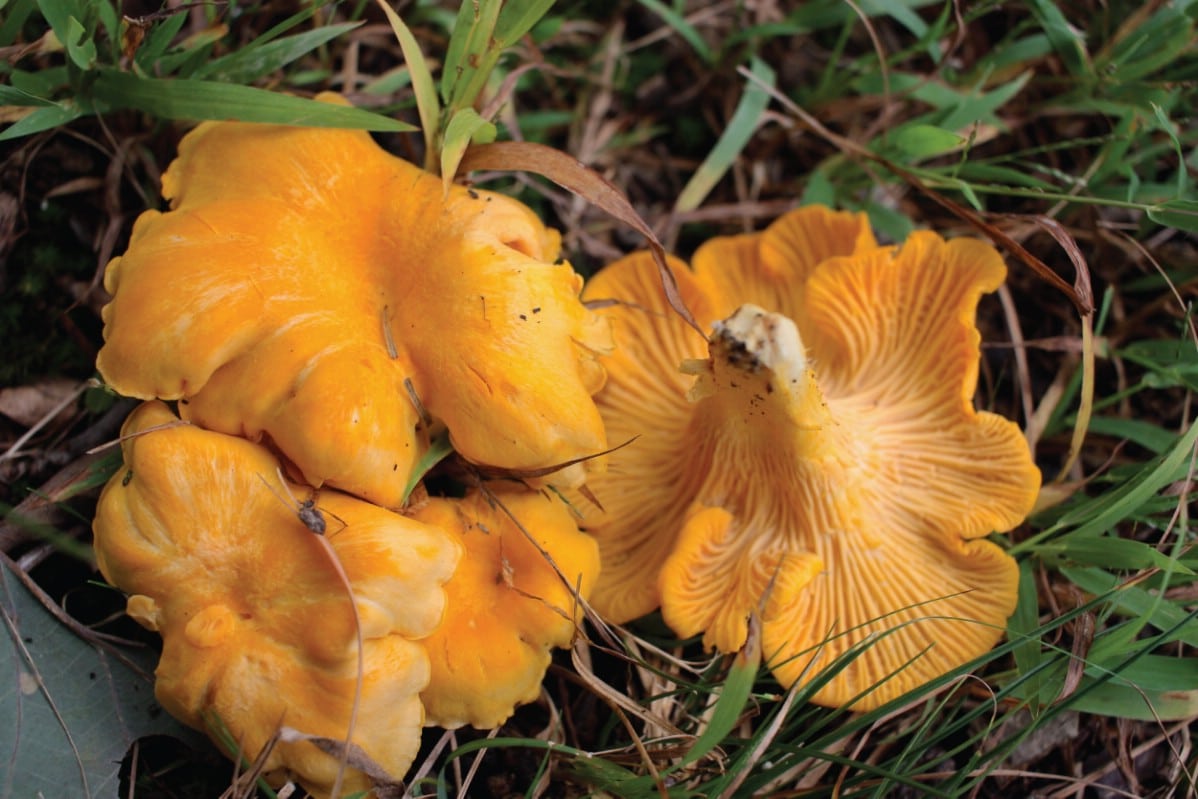
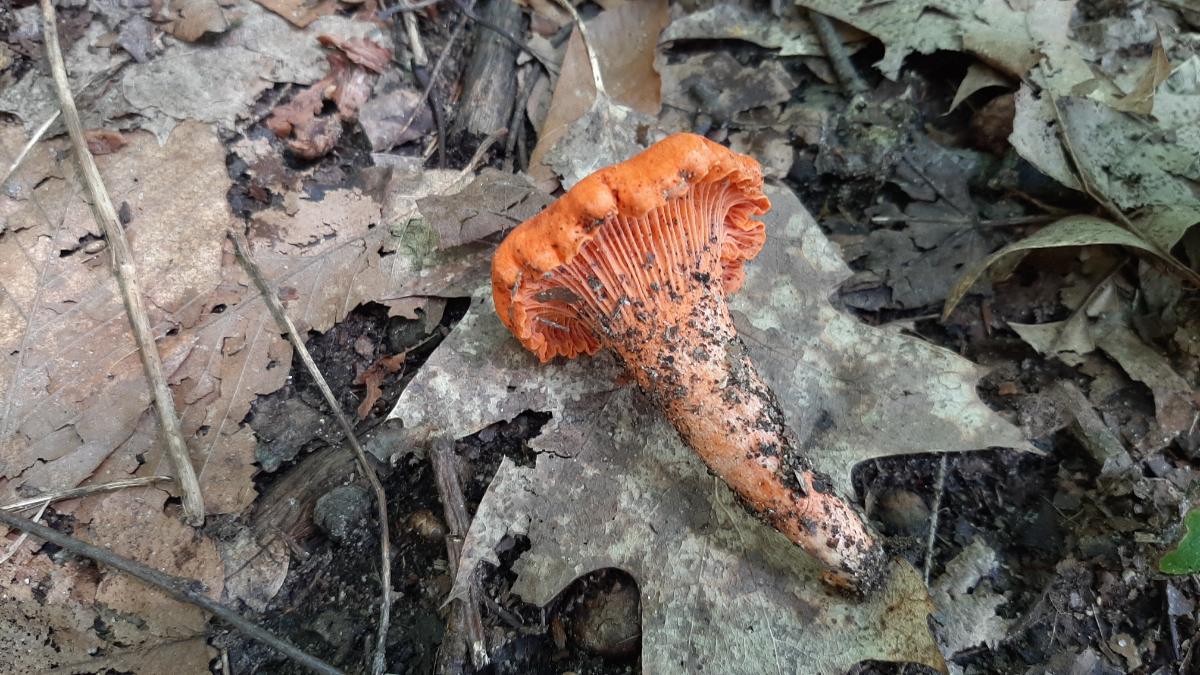
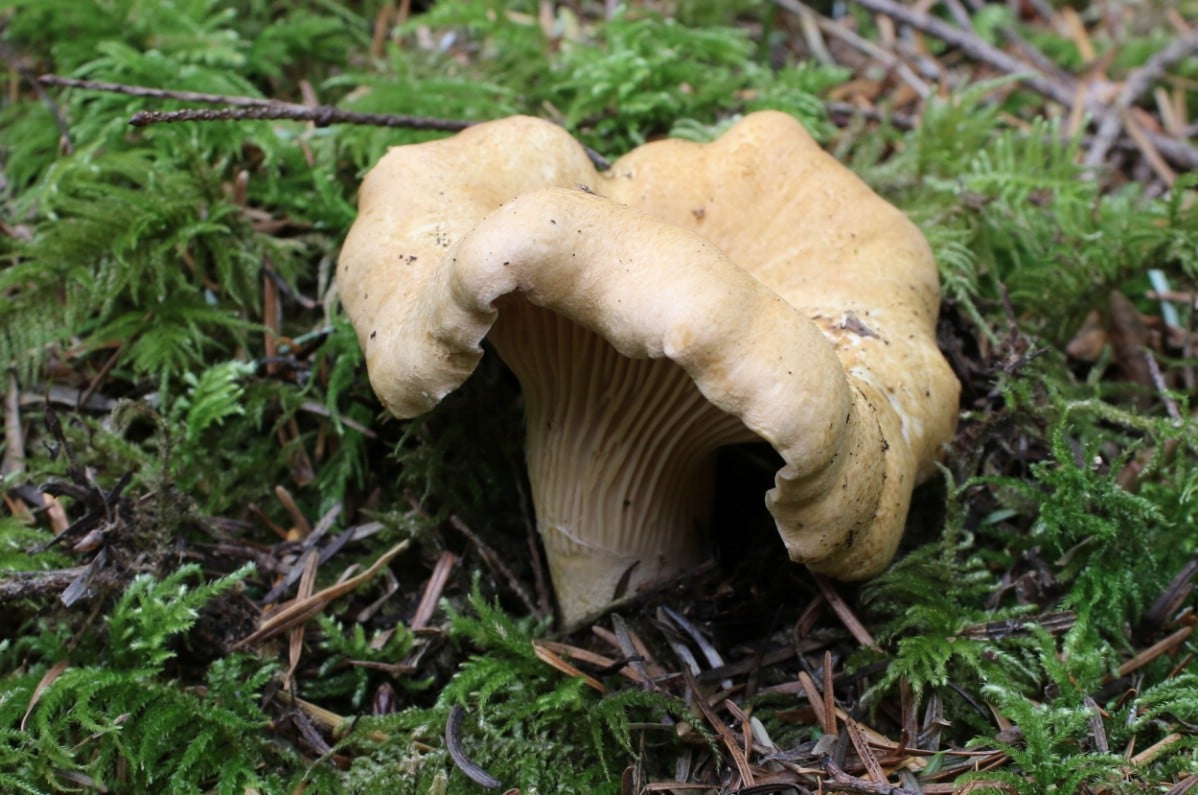
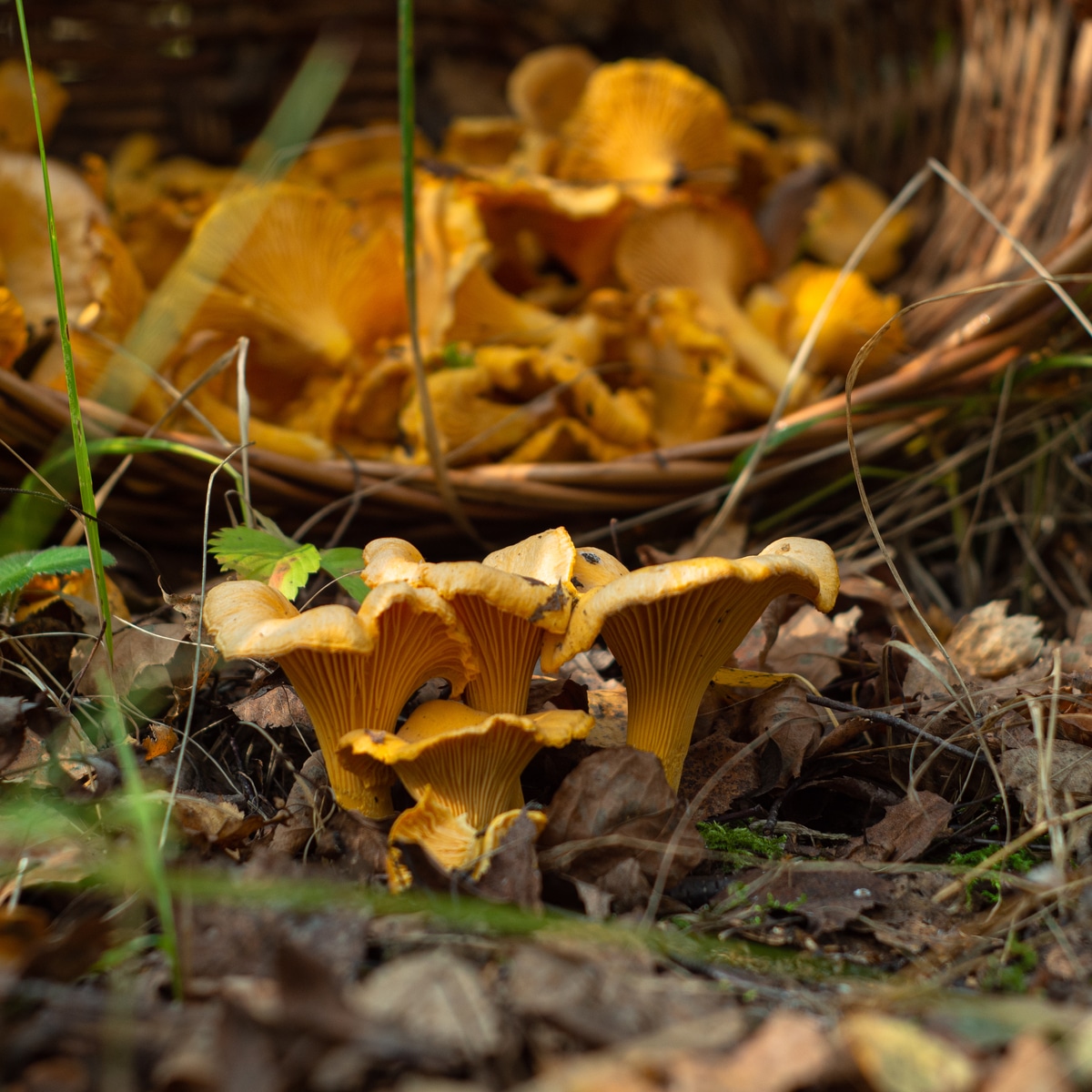
In addition to the “common” golden chanterelle in the US no longer having its long-used name, DNA analysis split out the golden chanterelles into many different species. So, there isn’t just one name to replace the common name we’ve been using. Talk about confusing! And, it is likely there will be more changes as more research is done.
If you’re new to foraging chanterelle mushrooms, you should start with the essential Chanterelle Foraging Guide. This guide discusses false gills, how to pick out the specific characteristics of chanterelles to make a positive identification, as well as detailed information about foraging and dangerous lookalikes.
Jump to:
Chanterelle Science and Why It’s Important?
Science needs your help! When you collect golden Cantharellus cibarius-like chanterelles, take a moment to do a little documentation. This is the only way we will have any resolution to the great Chanterelle conundrum. We’re the ones out in the woods, at ground level, foraging all these stunning mushrooms and getting first-hand knowledge about how and where they’re growing.
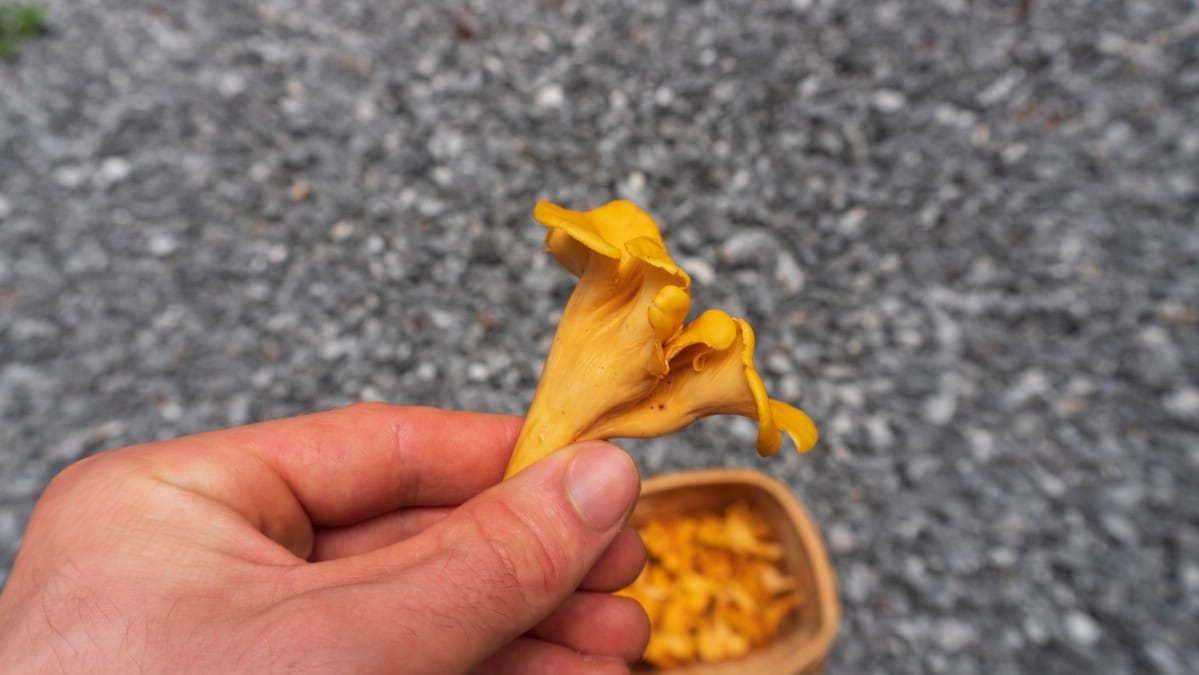
Six Steps To Better Chanterelle Mycology
- Take a spore print. So far, colors recorded for cibarius-like chanterelles include white, cream (off-white), pinkish, yellow, and salmon pink.
- Document the color of the false gills
- The trees within toppling range. These are the trees in the area that would land on top of the mushroom if they were to fall over.
- Documentation — write down the basic morphology and take pictures – size, shape, coloring.
- Compare your chanterelle find against the list of known species in this guide.
- List your find in Inaturalist or Mushroom Observer for others to see – mycologists regularly use these citizen science platforms to instigate or follow up on their studies.
- BONUS: Record reaction to Iron Salts
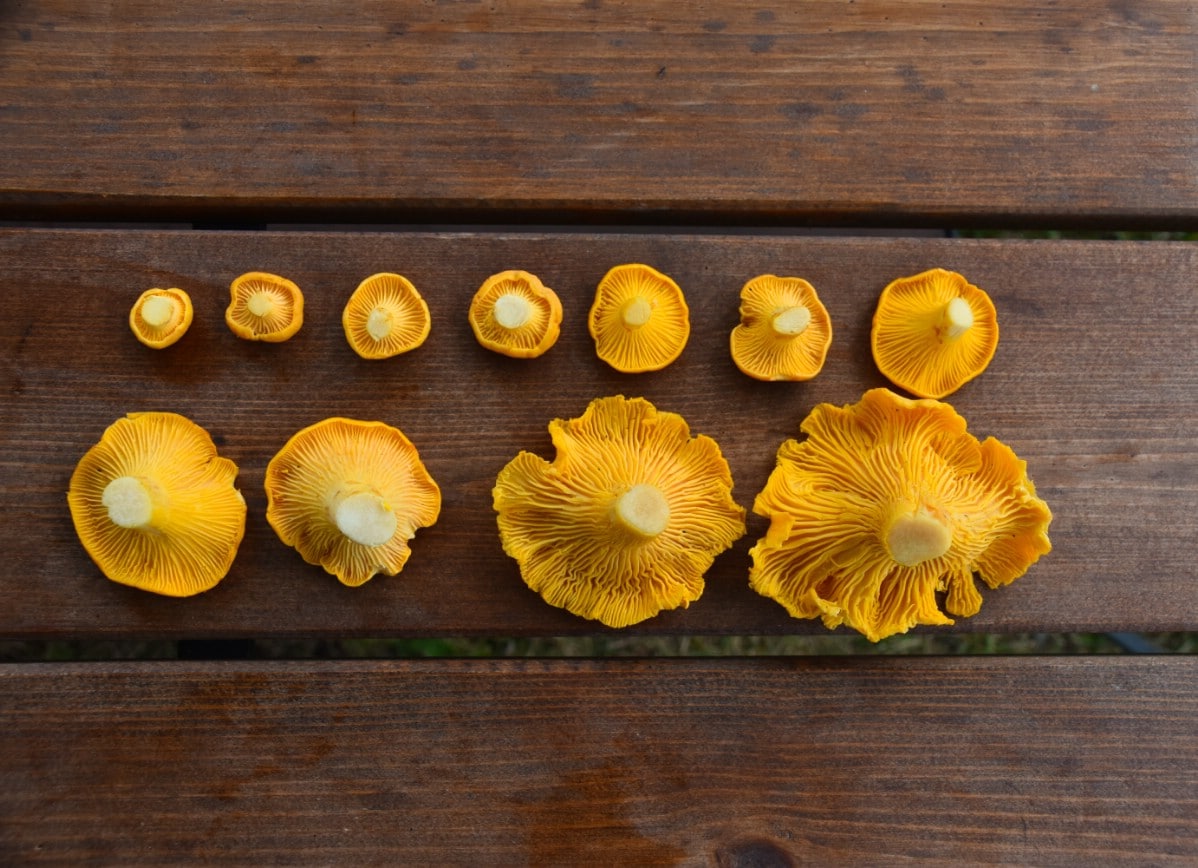
Many foragers who’ve been collecting golden chanterelles for decades may wonder why it’s even important to know the specific species. After all, the mushrooms being collected are obviously chanterelles, and they’re edible, so what else matters.
In some ways, this is true. If you’ve been collecting golden chanties for years, it does seem a little pointless to pay attention to particulars now. But unfortunately, that way of thinking is very in-the-moment and can lead to unexpected consequences.
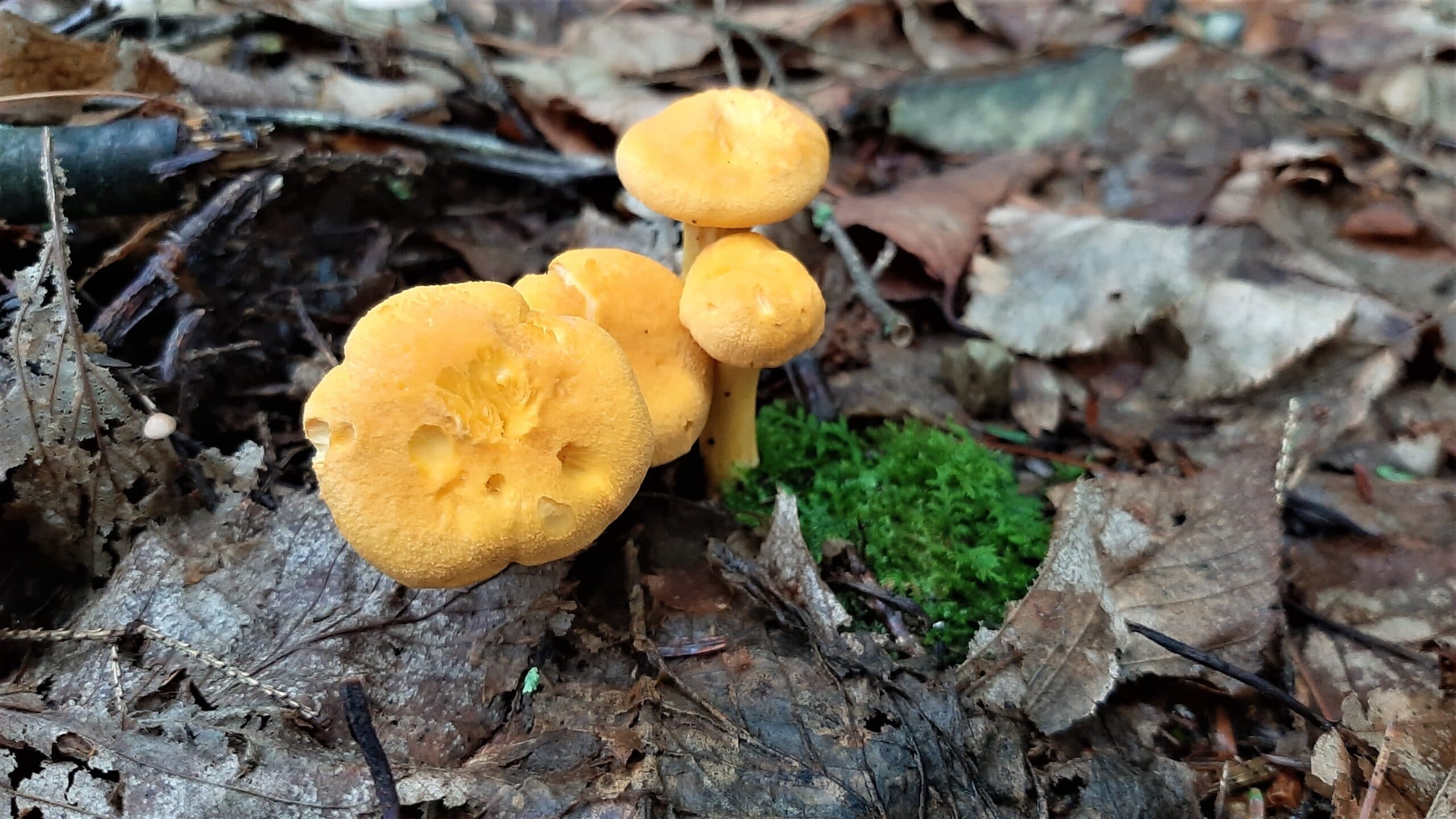
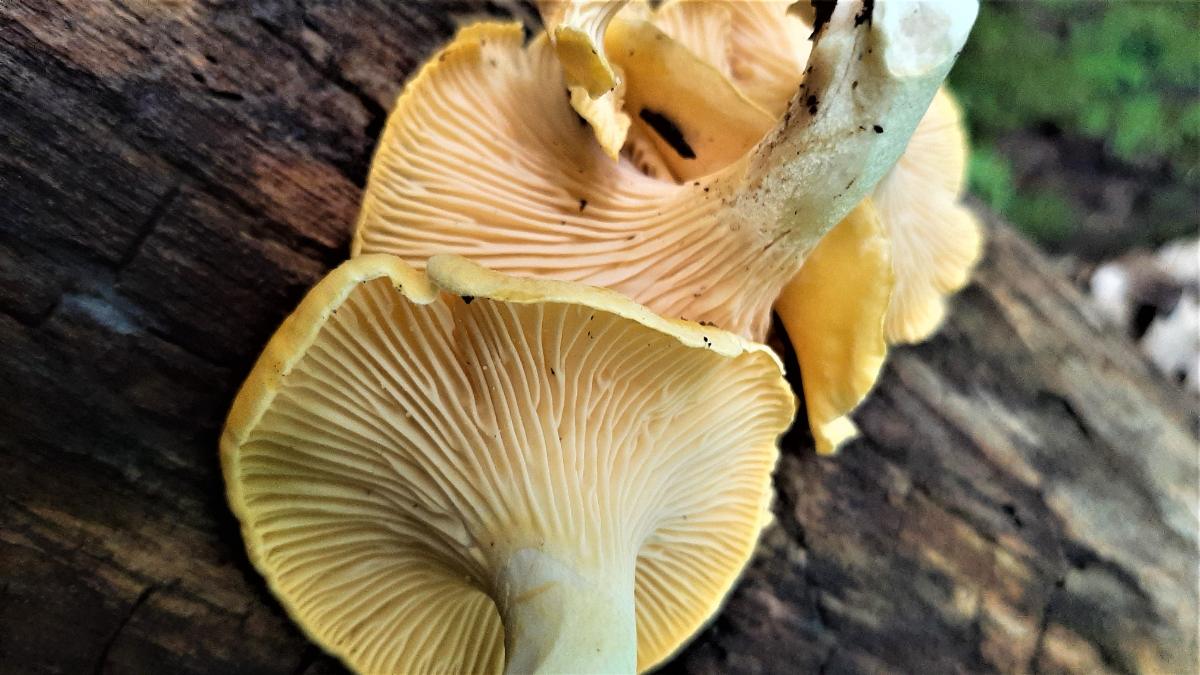
As our world changes, natural forested land where chanterelles grow is diminished. Chanterelles are mycorrhizal, which means they grow in association with different trees. And the tree type varies across species.
When we document the mushroom, we also document the tree or potential tree species. Since this relationship between chanterelle and tree is usually quite specific, ensuring the continuing fruiting of chanterelles also involves protecting the tree species.
The mushroom world is a small one compared to the logging/building/land development world, so any information we glean that may protect a species of mushroom is seriously essential. It might not be necessary now, but it could be in the near future.
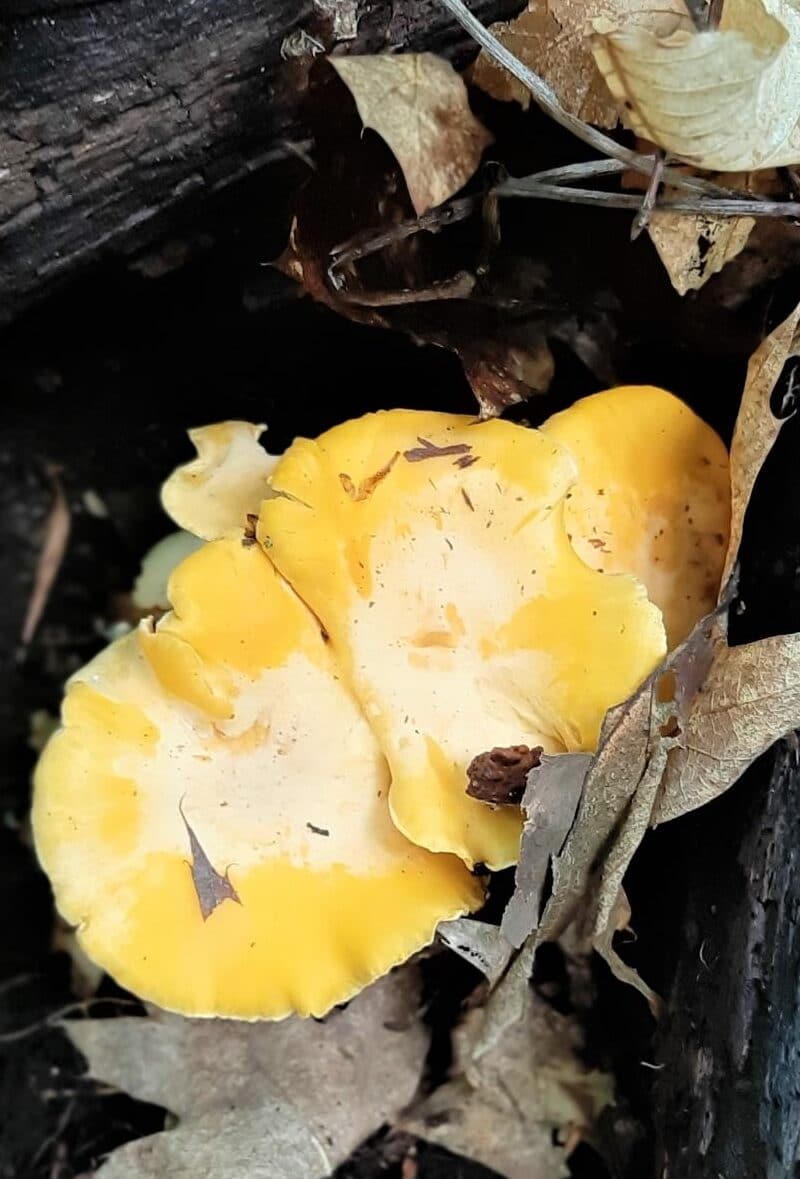
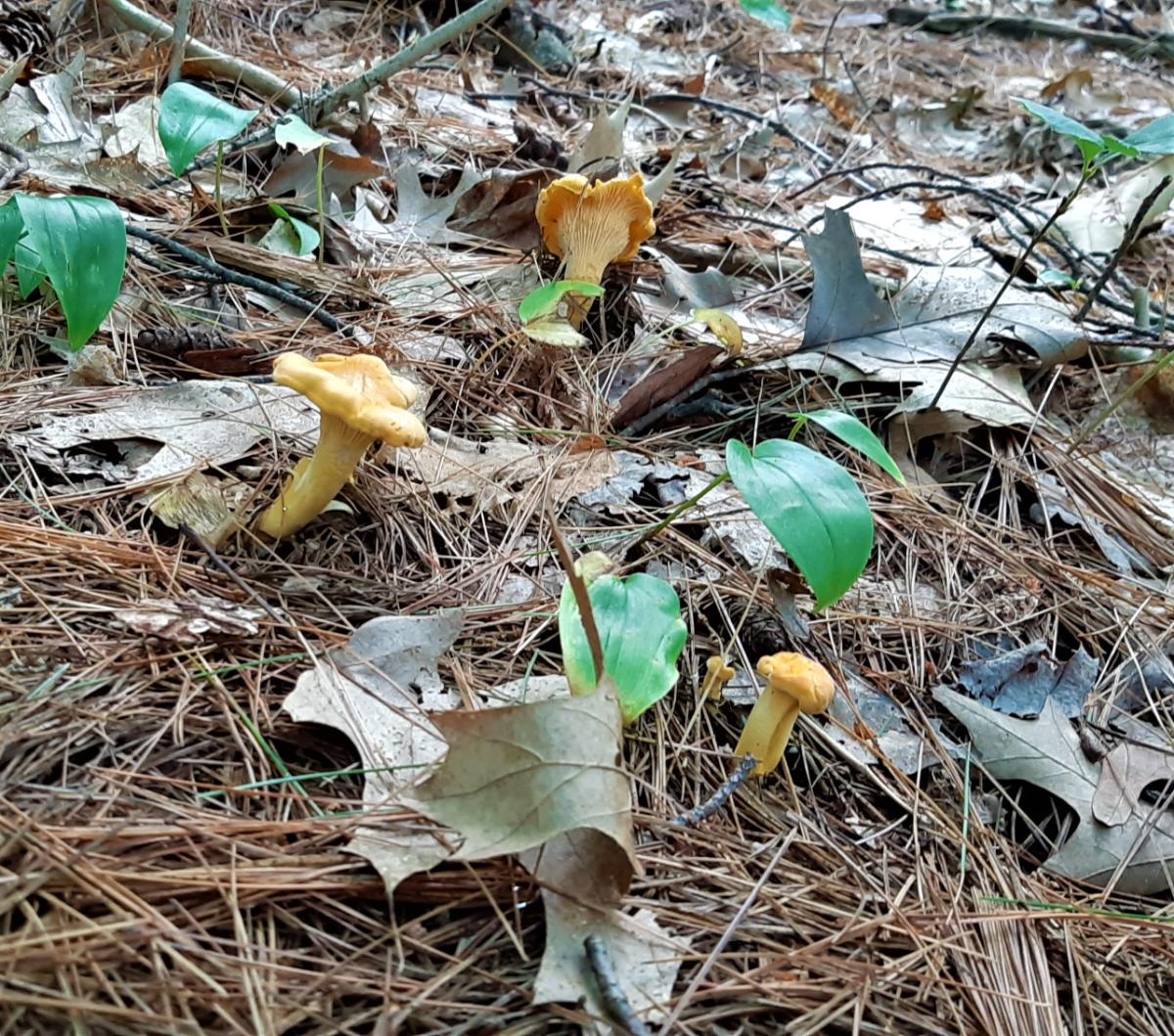
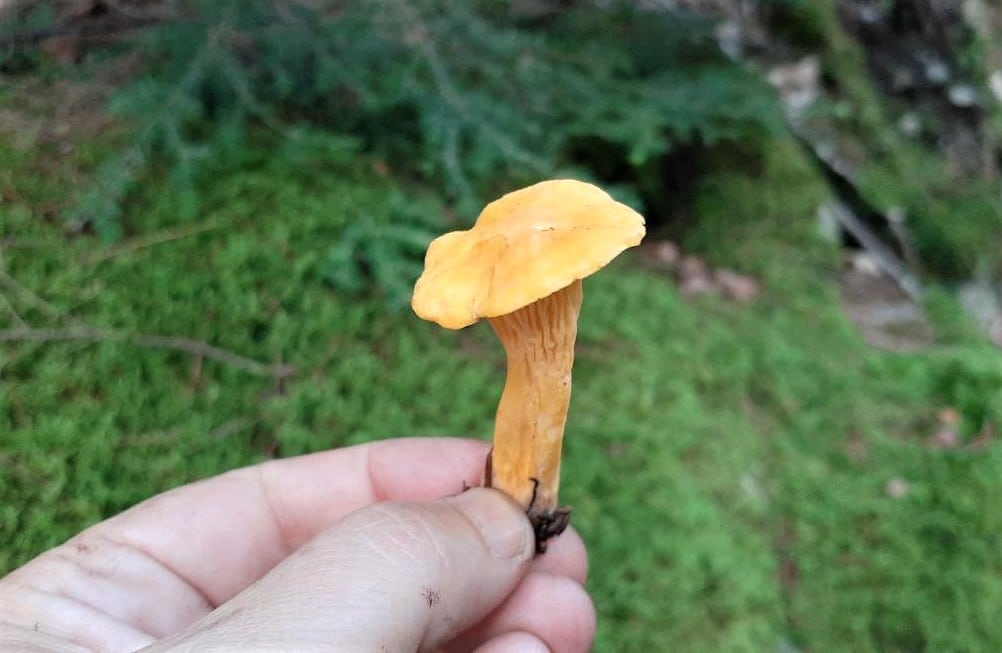
The more we understand about the specific species, the more we can protect them. Possibly, in the future, this additional information will help us figure out how to grow them, too. For now, though, if we aren’t paying attention to and recording the tree associations, time of year, size, and habitat, we might unintentionally destroy all their habitat and never see them again.
The North American Chanterelle Species: Overview
There are 40 or more chanterelle types in North America. This list doesn’t detail them all but gives as much of a thorough run-down as is possible by the citizen mycologist. I’ve broken the species down into sections based on basic coloring: golden/yellow, white, and red. This is a rough separation and by no means regulated. However, from a foraging perspective, it helps a lot.
This guide doesn’t go into all the specifics of false gills or the characteristics necessary to identify chanterelles successfully. If you’re interested in a more basic guide, check out the Chanterelle Foraging Guide, which includes identification information, lookalikes, seasonality, and habitat information.
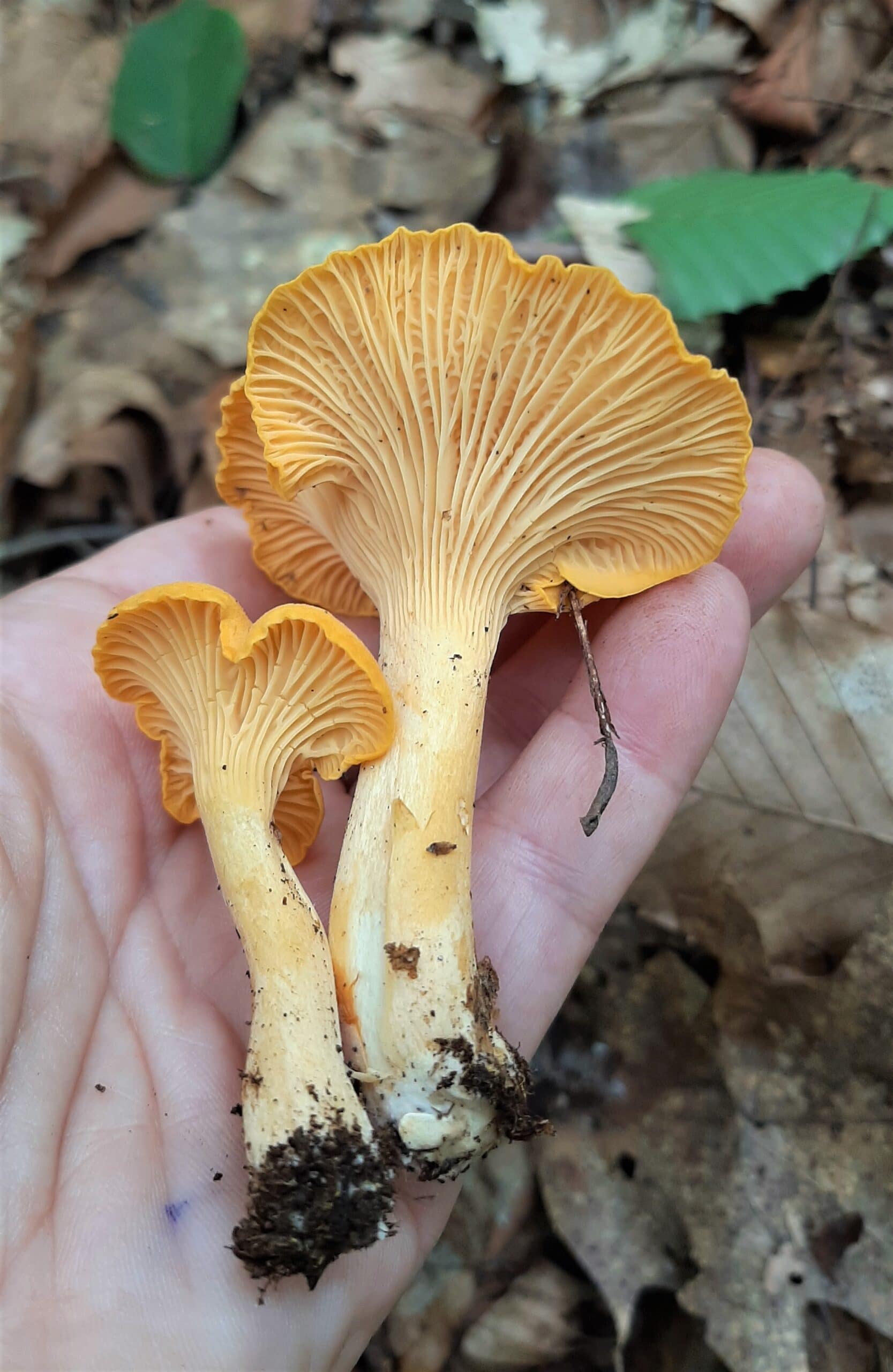


- Golden Chanterelles are identified as those that resemble the Cantharellus cibarius species we’ve been incorrectly using for decades, as well as those yellow types that are significantly different from the classic golden.
- White Chanterelles are those that are pale or white
- Red Chanterelles include red, pink, and orangy types that are the outliers of the classic golden chanterelle world.
Golden/Yellow Chanterelles
Cantharellus altipes (Cantharellus septentrionalis)
- Region: Texas, Michigan, Midwest
- Season: Summer through fall
- Habitat: Oak and pine woods, sandy soil
- Size: Small compared to other golden chanterelles
- Shape: Stem often longer than the cap is wide.
- Color: Golden yellow
- False Gills: golden yellow
- Spore Print: Cream
- Notes: C. altipes species named in 2011. C. septentrioinalis name from 1968. They may be the same species. Also may be the same as C.cibarius var. longipes. Not enough research or specimens were collected to say for sure.
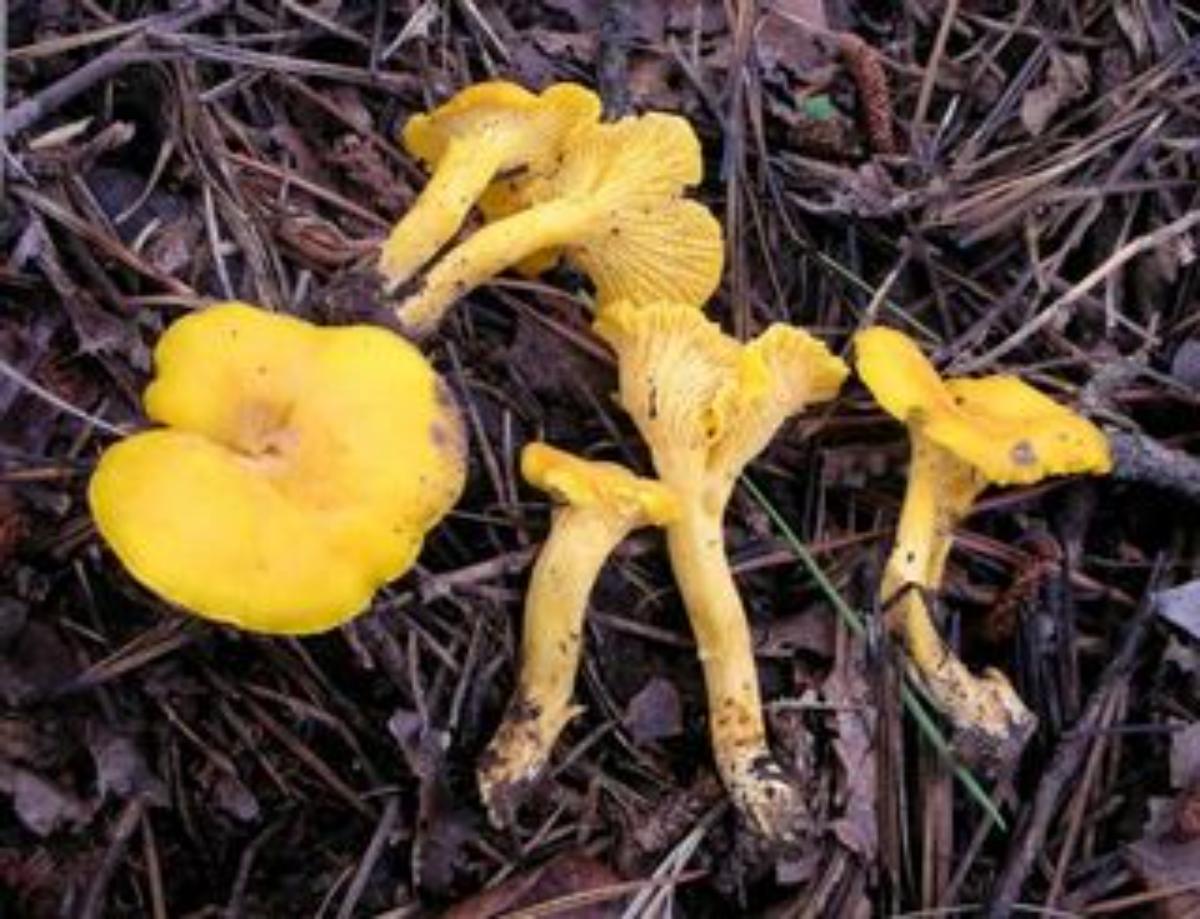
Cantharellus appalachiensis
- Region: East of the Great Plains
- Season: Summer
- Habitat: Oaks, hardwoods
- Size: Cap .5-2.5 inches across, Stem .75-2.5 inches long
- Color: Brownish cap with yellow undertones, brown/cream stem
- False Gills: Yellow
- Spore Print: White/Cream
- Notes: Flesh is whitish or yellowish and doesn’t change color. They are distinguishable from other golden chanterelles by their brown shading.
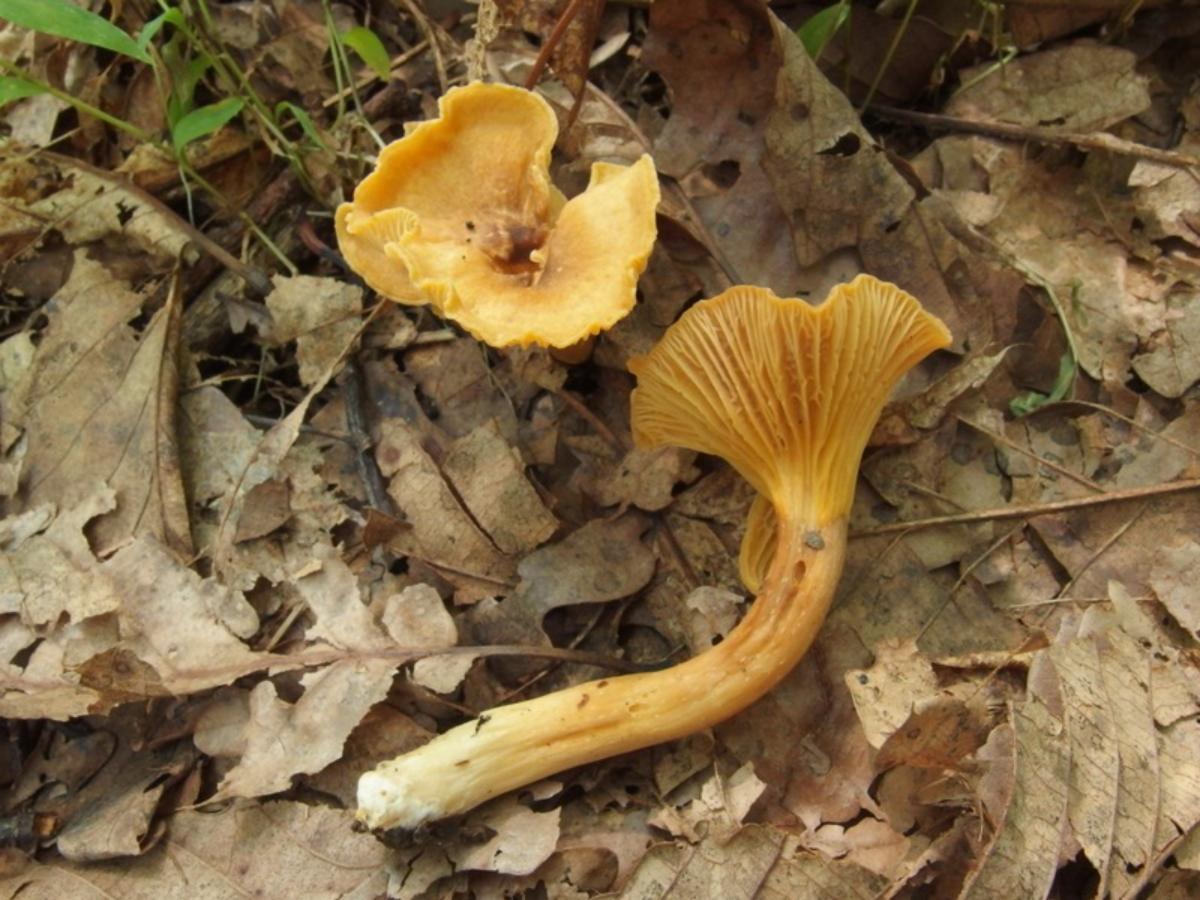
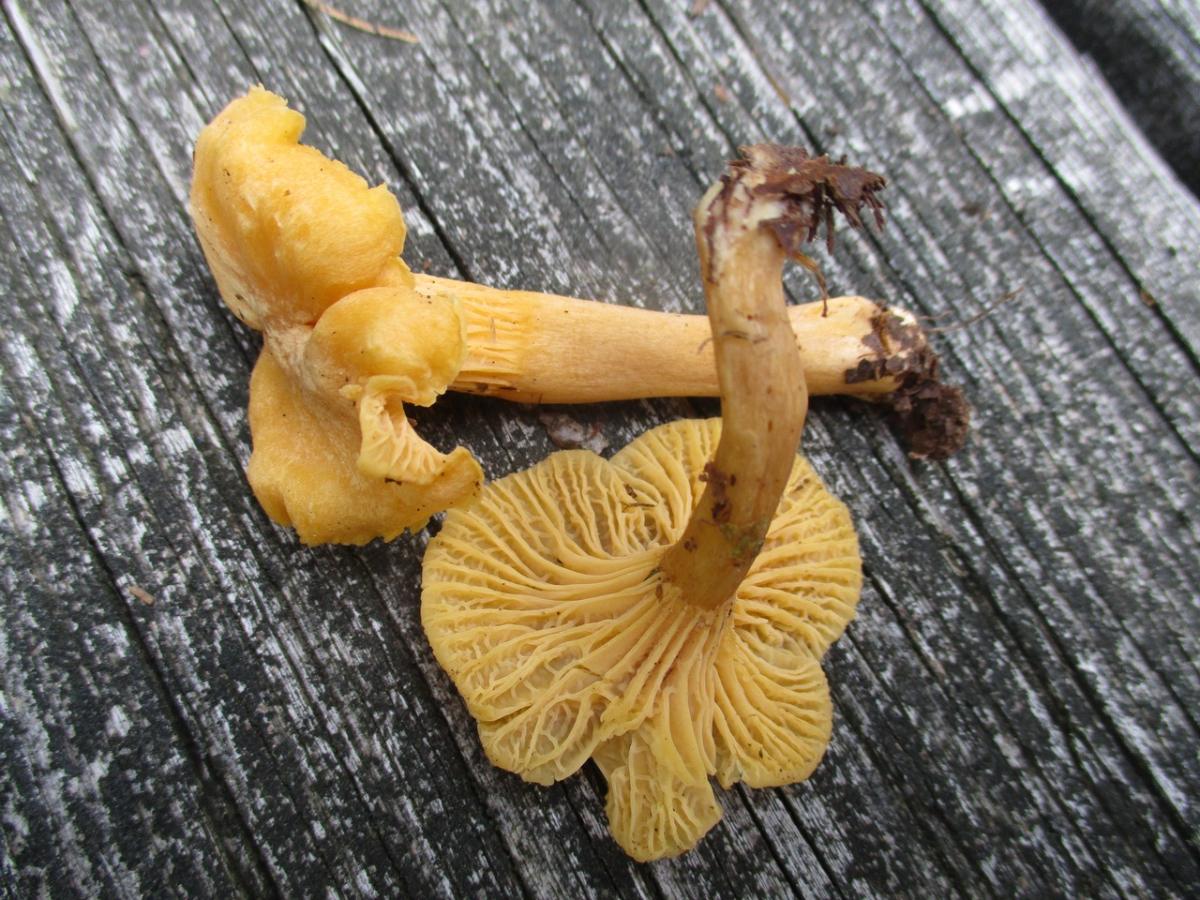
Cantharellus californicus
- Region: California
- Season: Fall through winter
- Habitat: California live oak, possibly other oaks
- Size: Cap 5-8 inches across, Stem 1-3 inches long, and stocky
- Color: Golden egg-yolk yellow
- False Gills: Golden or light yellow
- Spore Print: Yellowish
- Notes: It is popularly called the “mud puppy” because of its habit of pushing through muddy debris after heavy rains. Previously thought to be C. cibarius; received its true name is 2008.
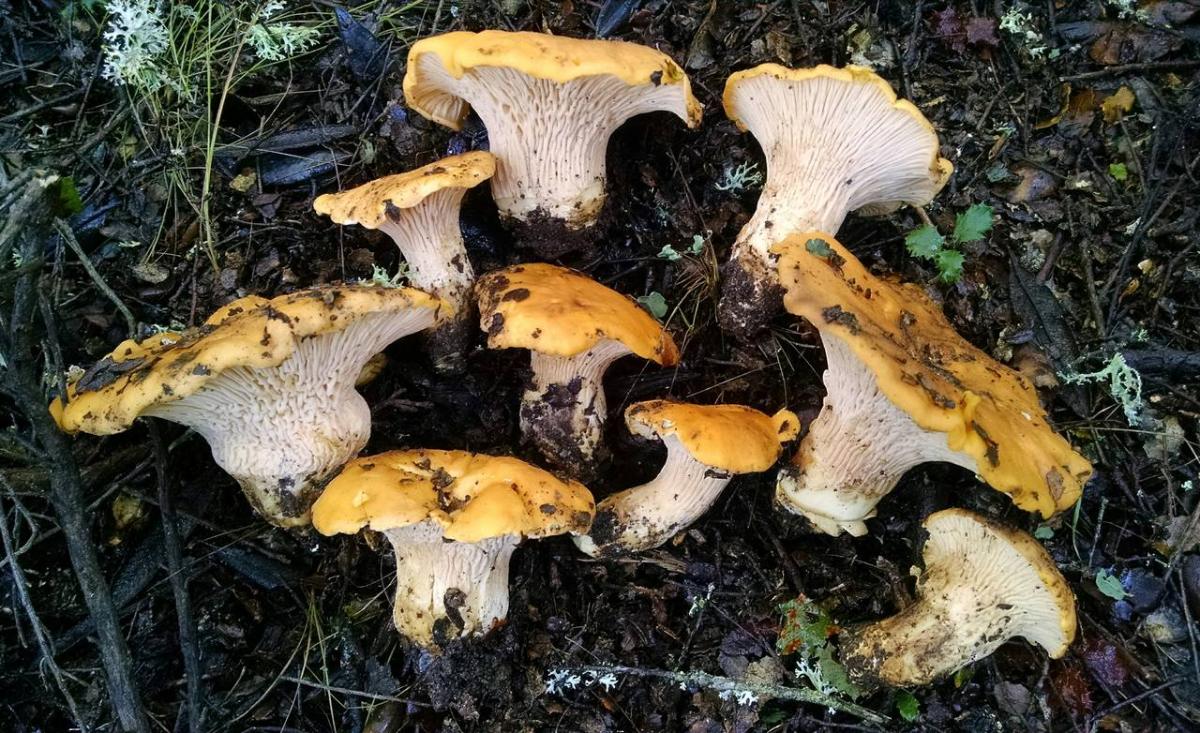
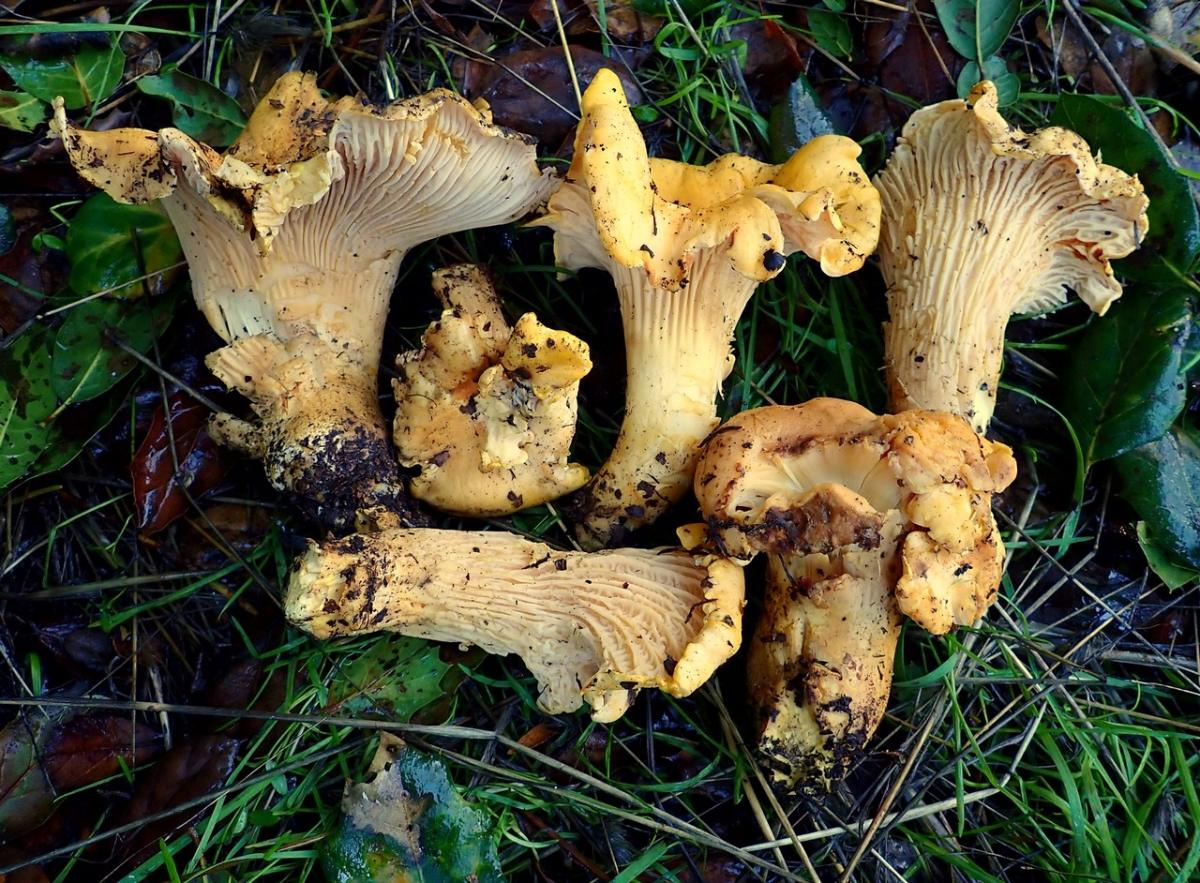
Cantharellus cascadensis (Cascade chanterelle)
- Region: Pacific Northwest
- Season: Summer through early winter
- Habitat: Douglas fir, conifer forests
- Size: Cap 1.5-4.75 inches across, Stem .75-4 inches long and stocky
- Color: Golden orange, yellow
- False Gills: Pale yellow to cream
- Spore Print: White/Cream
- Notes: Overall stocky (chonky) appearance
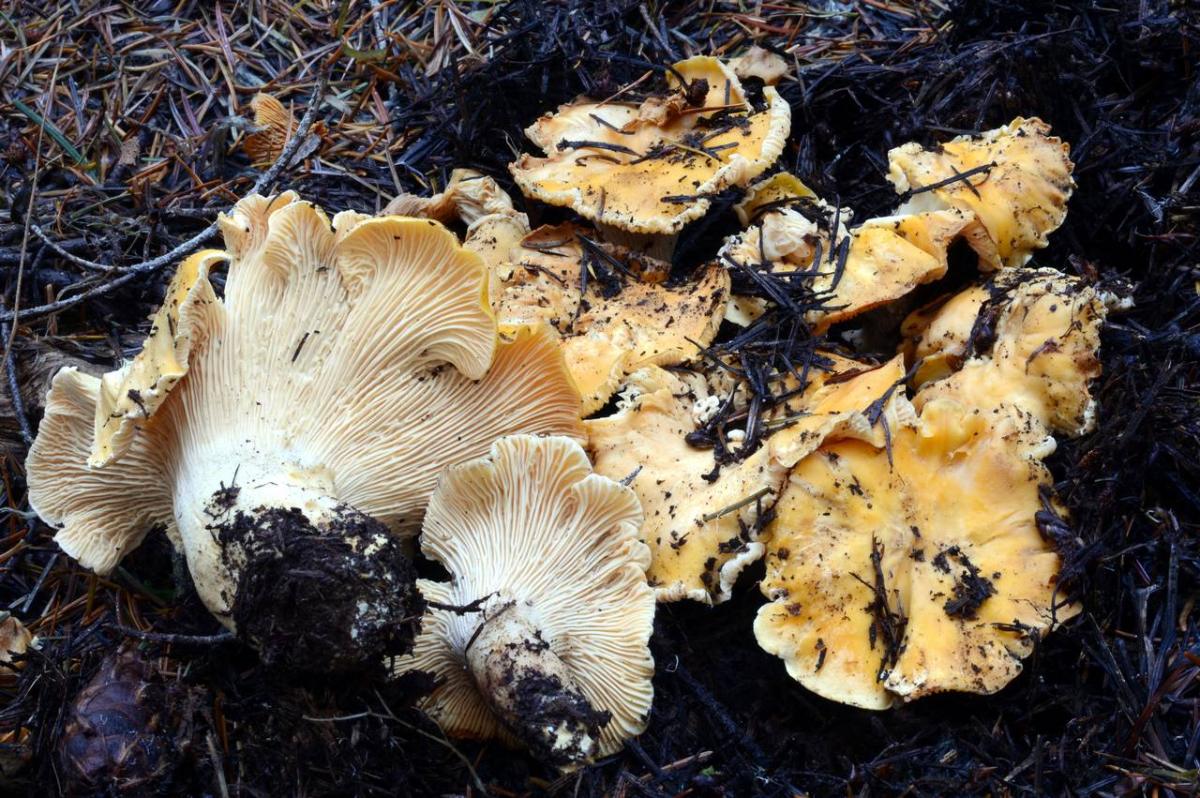
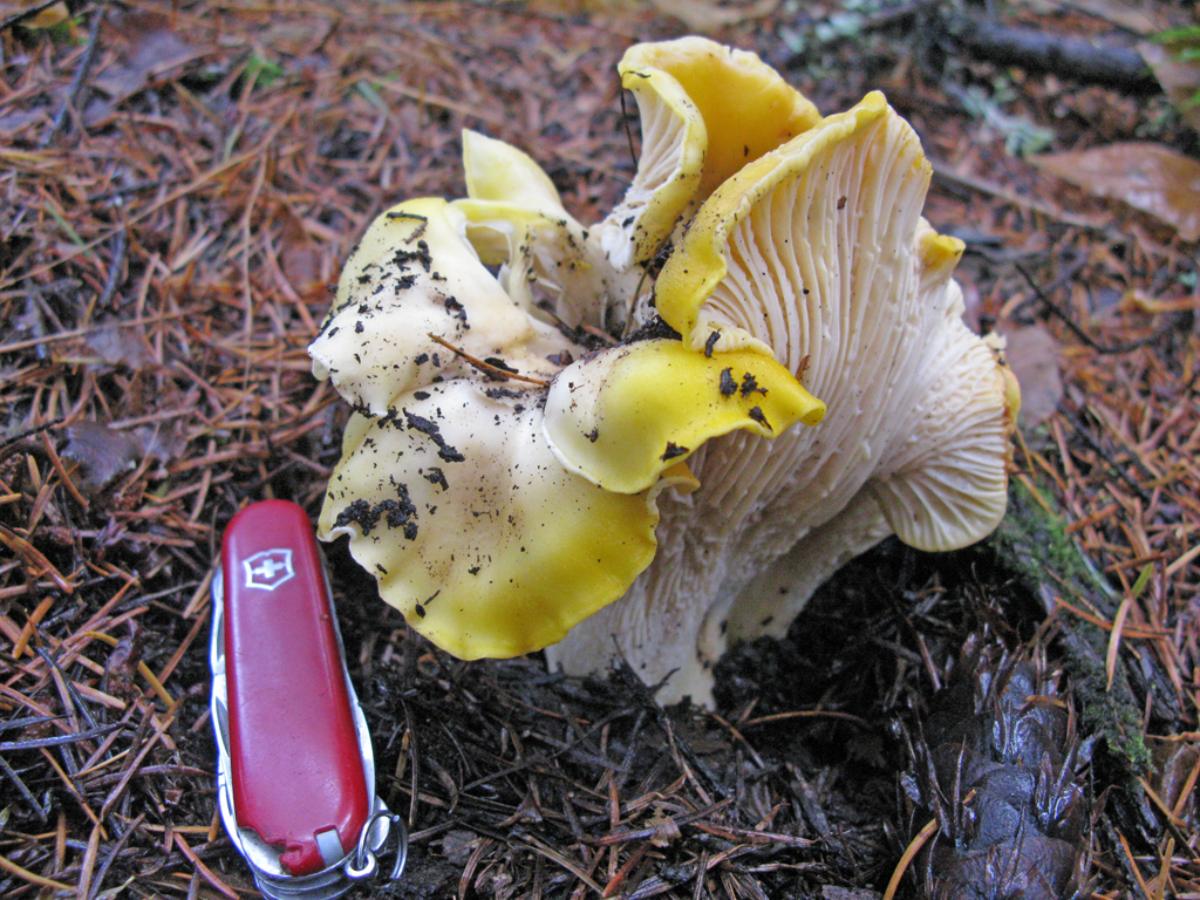
Cantharellus confluens
- Region: Southeastern United States
- Season: Summer
- Habitat: Hardwoods
- Size: Cap 2-3 inches across, Stem up to 2 inches long
- Color: Golden yellow
- False Gills: Golden or pale yellow
- Spore Print: Pale yellow
- Notes: The false gills are almost nonexistent. The underside is mostly smooth or slightly wrinkled. This species also grows in dense clumps – one stem produces multiple cap-like growths that overlap. The overall growth is overlapping, wavy, irregular, and smooth.
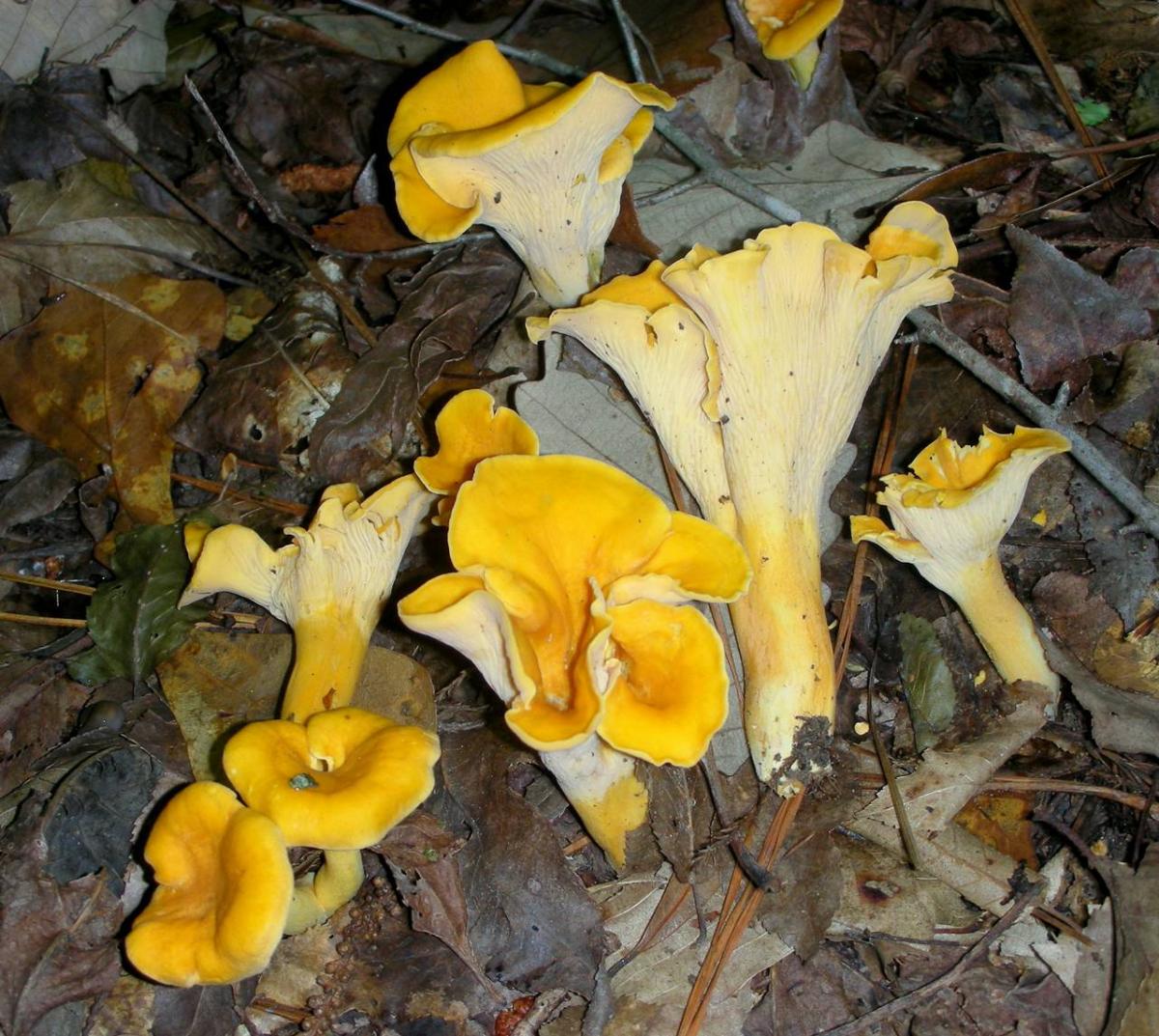
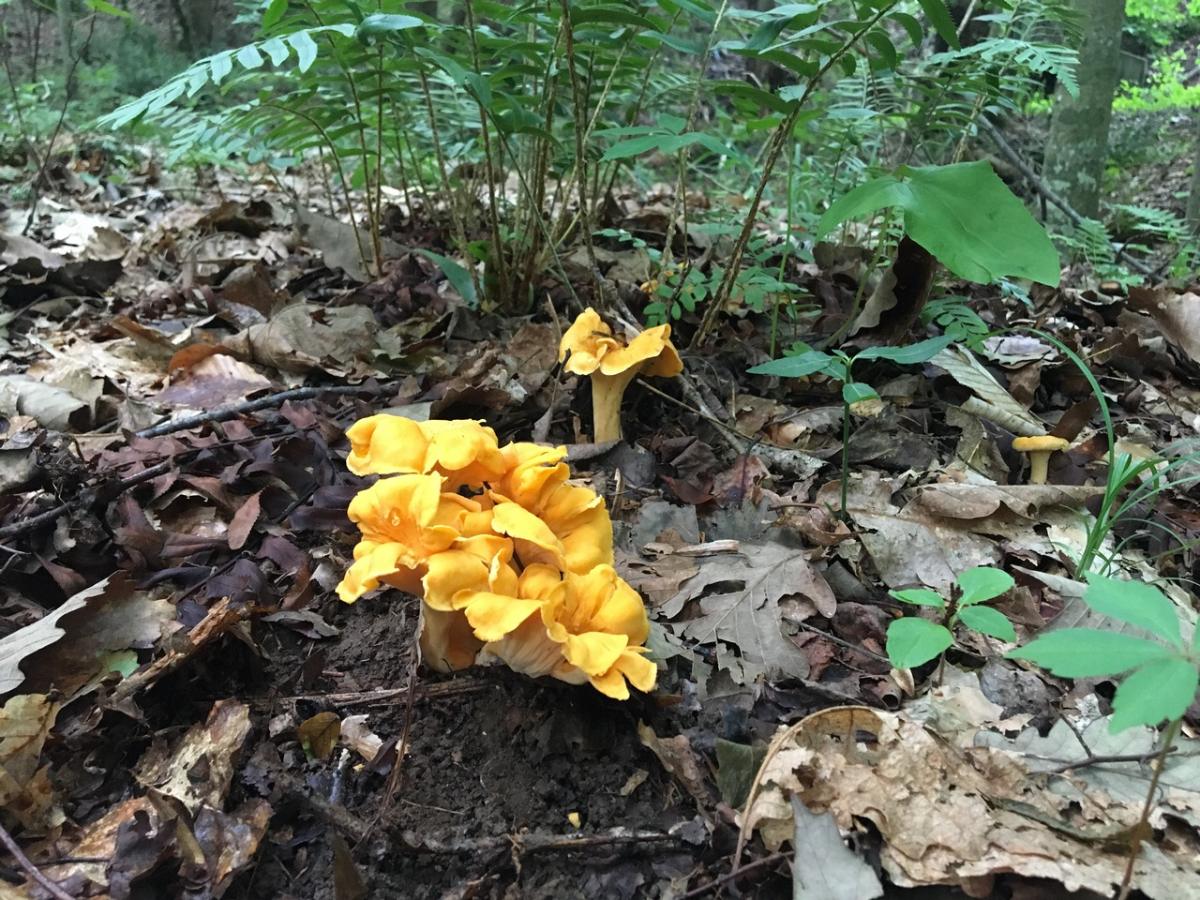
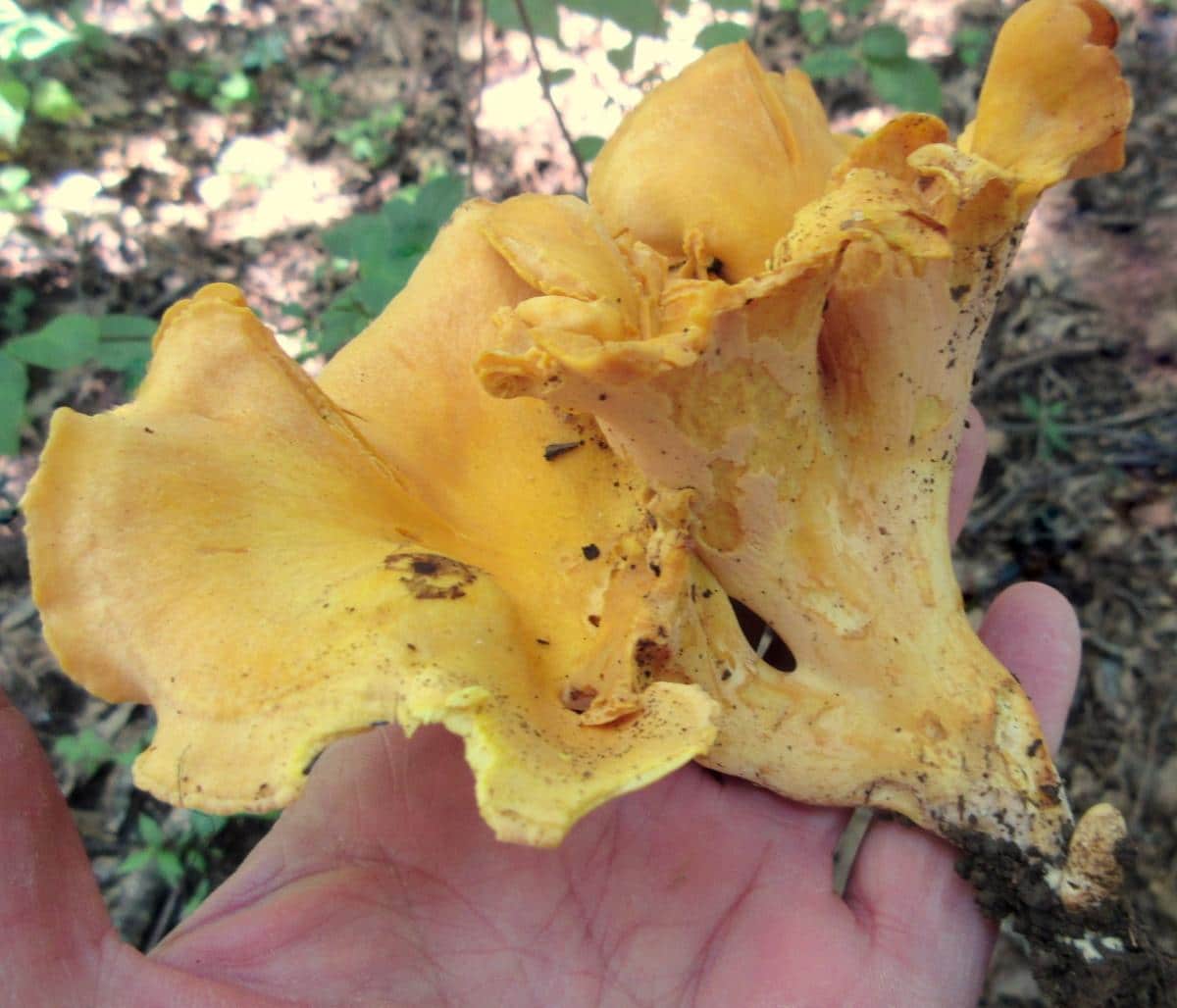
Cantharellus enelensis
- Region: Midwest, Canada, possibly more widespread
- Season: Summer through fall
- Habitat: Conifer forests
- Size: Cap 1-4.25 inches diameter
- Color: Yellow-brown
- False Gills: Orange to yellow
- Spore Print:
- Notes: Stem is thick and long. Difficult to tell apart from other golden chanterelles without DNA analysis. Documented and named in 2016.
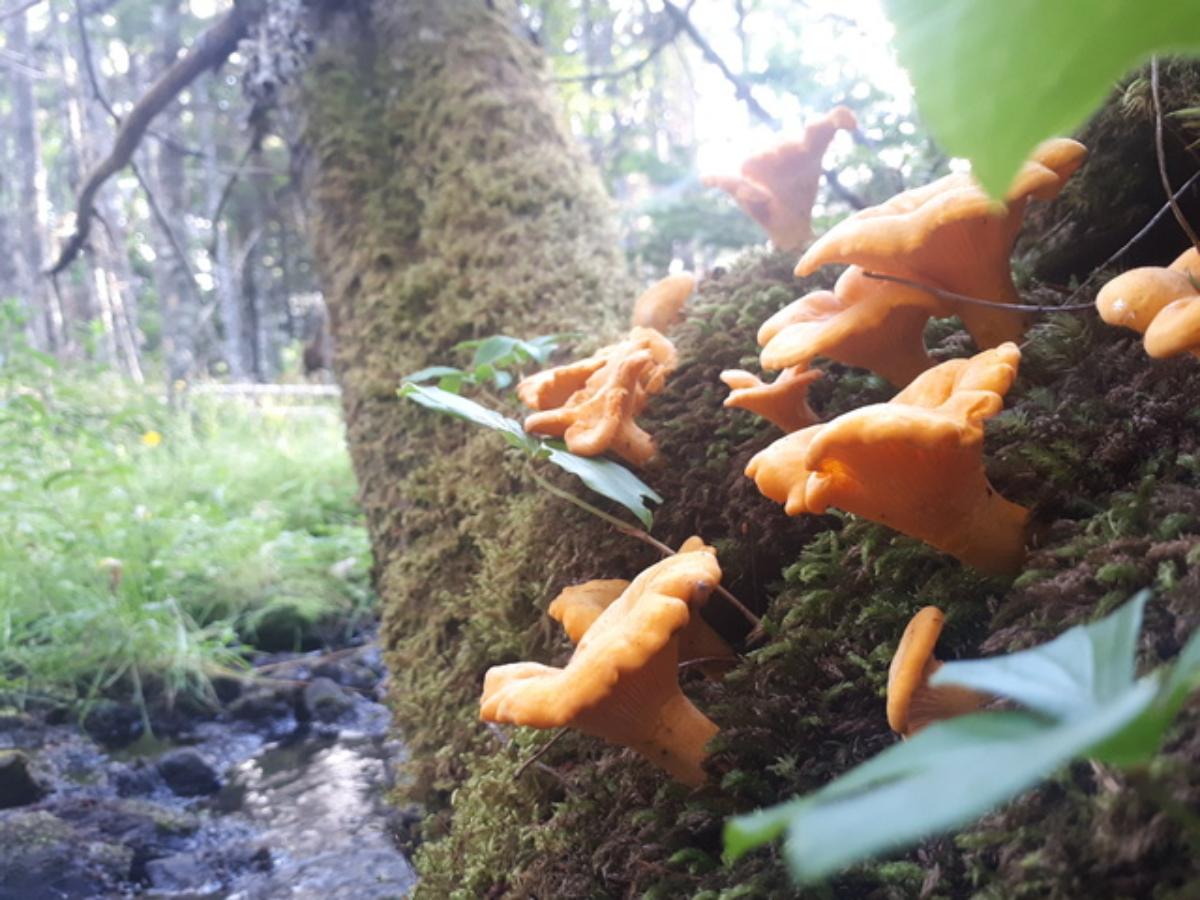
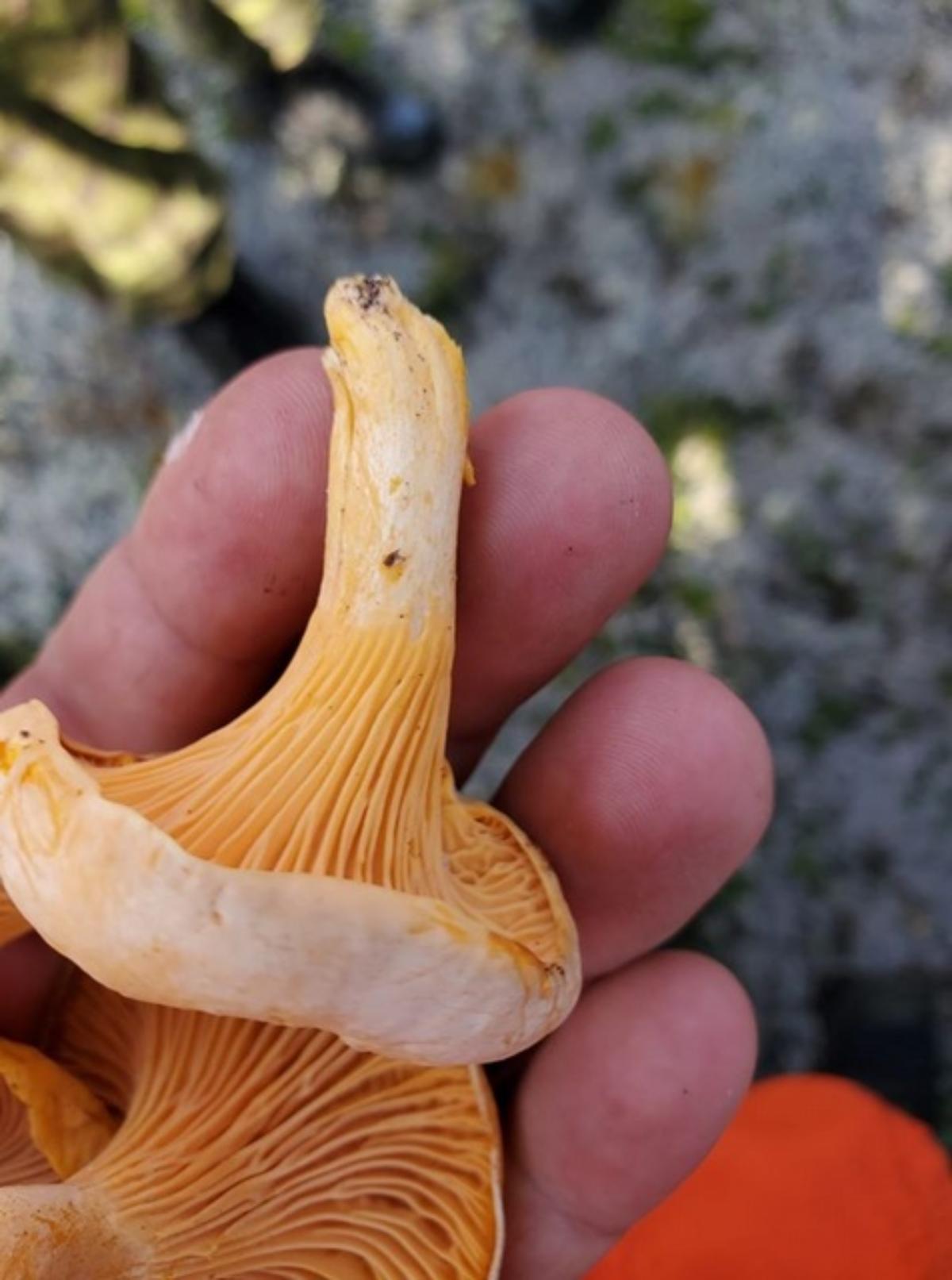
Cantharellus flavus
- Region: Midwest, Texas, exact distribution unknown
- Season: Summer through fall
- Habitat: Hardwood, especially oaks or mixed forests
- Size:
- Color: Golden yellow
- False Gills: Yellow
- Spore Print: Bright yellow
- Notes: Documented and named in 2013.
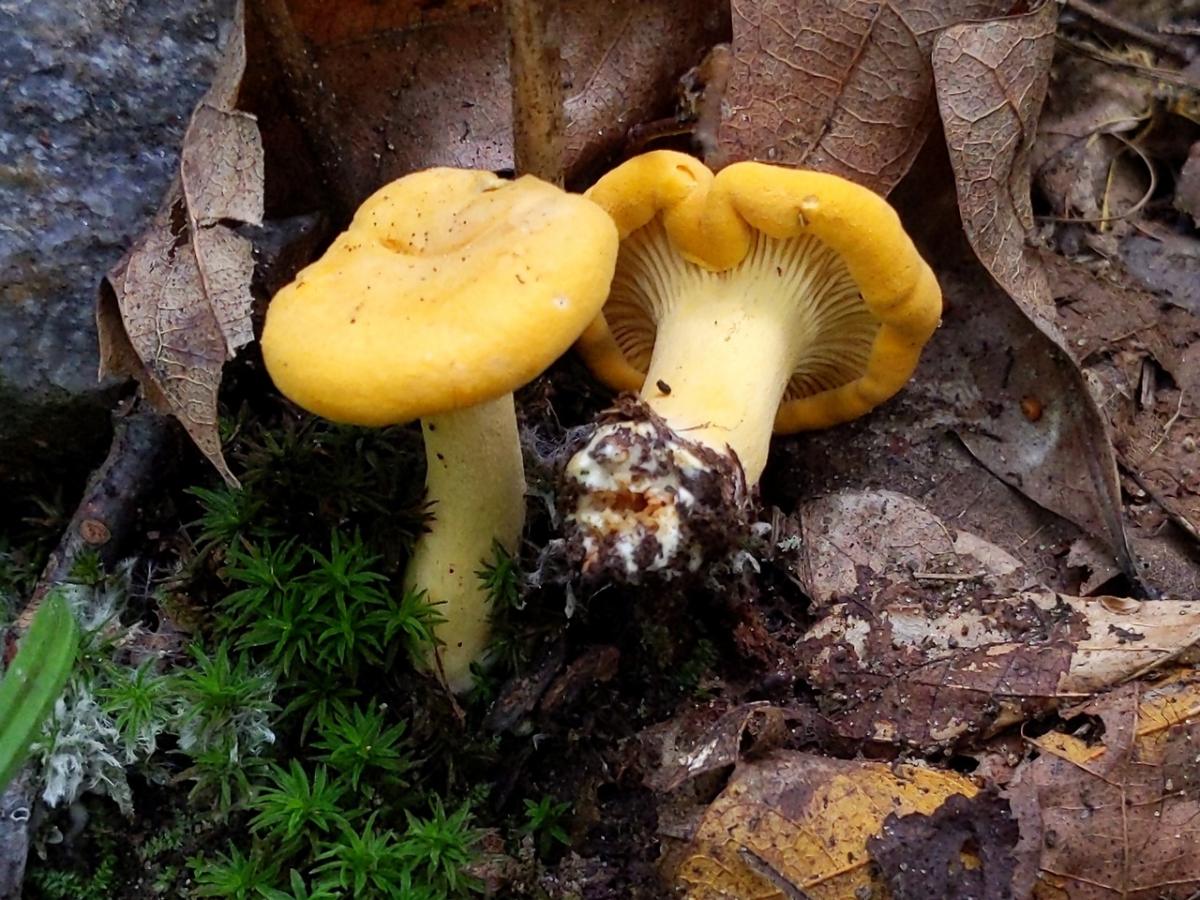
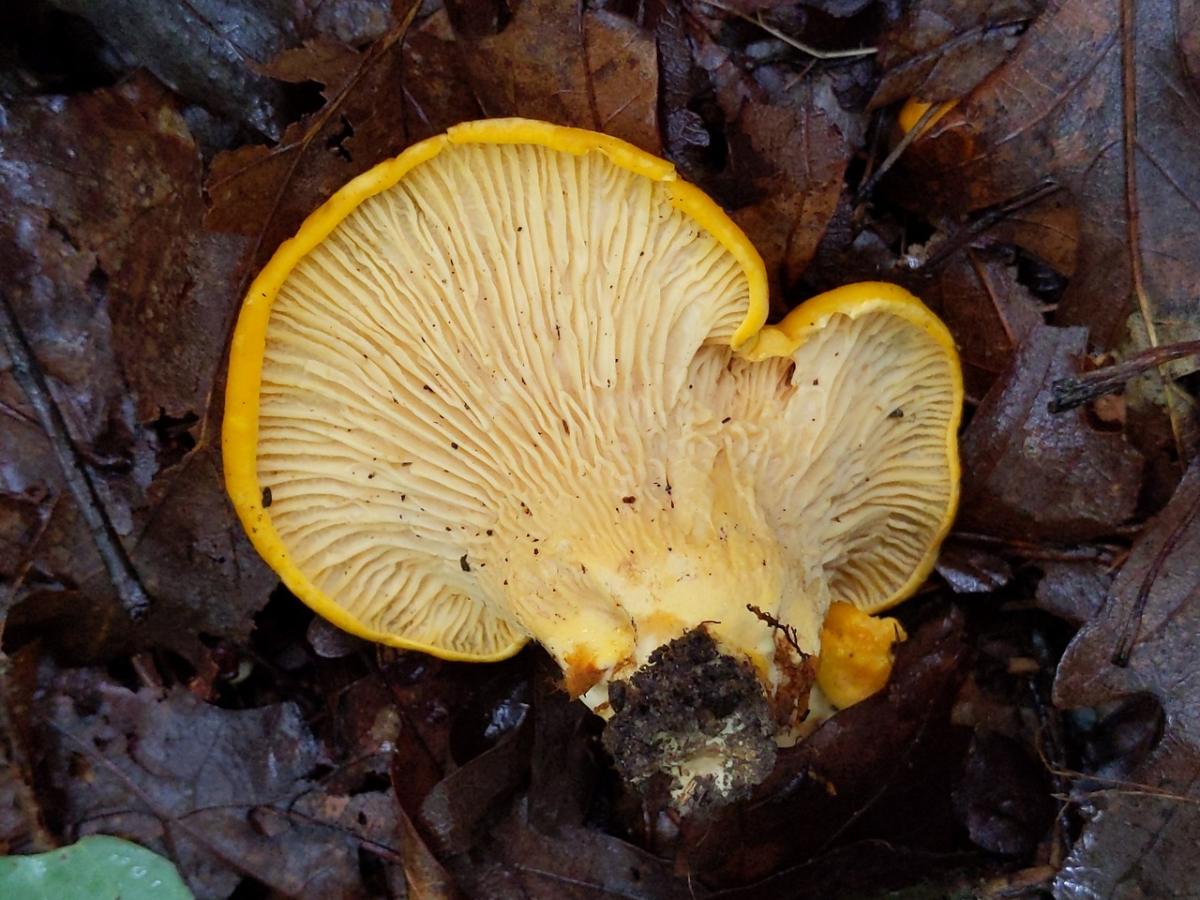
Cantharellus formosus (Pacific Golden Chanterelle)
- Region: Pacific Northwest, California
- Season: Summer through Winter
- Habitat: Conifers, especially Douglas fir and western hemlock
- Size: Cap .75-5.5 inches wide, Stem 1.5-2.25 inches long
- Color: Orange-yellow, sometimes rosy
- False Gills: Orange or yellow with a pinkish hue (salmon) or buff
- Spore Print: Creamy yellow
- Notes: Most common in Washington and Oregon; it is Oregon’s state mushroom
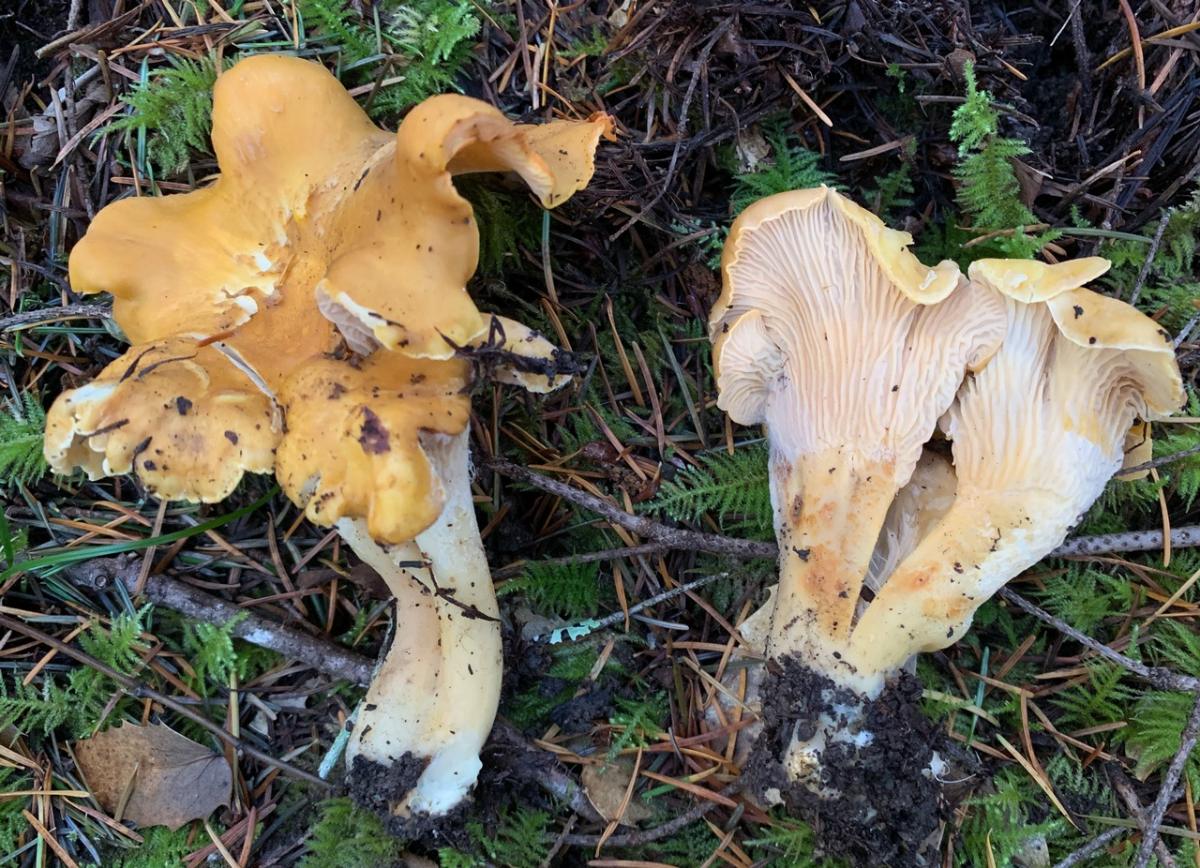
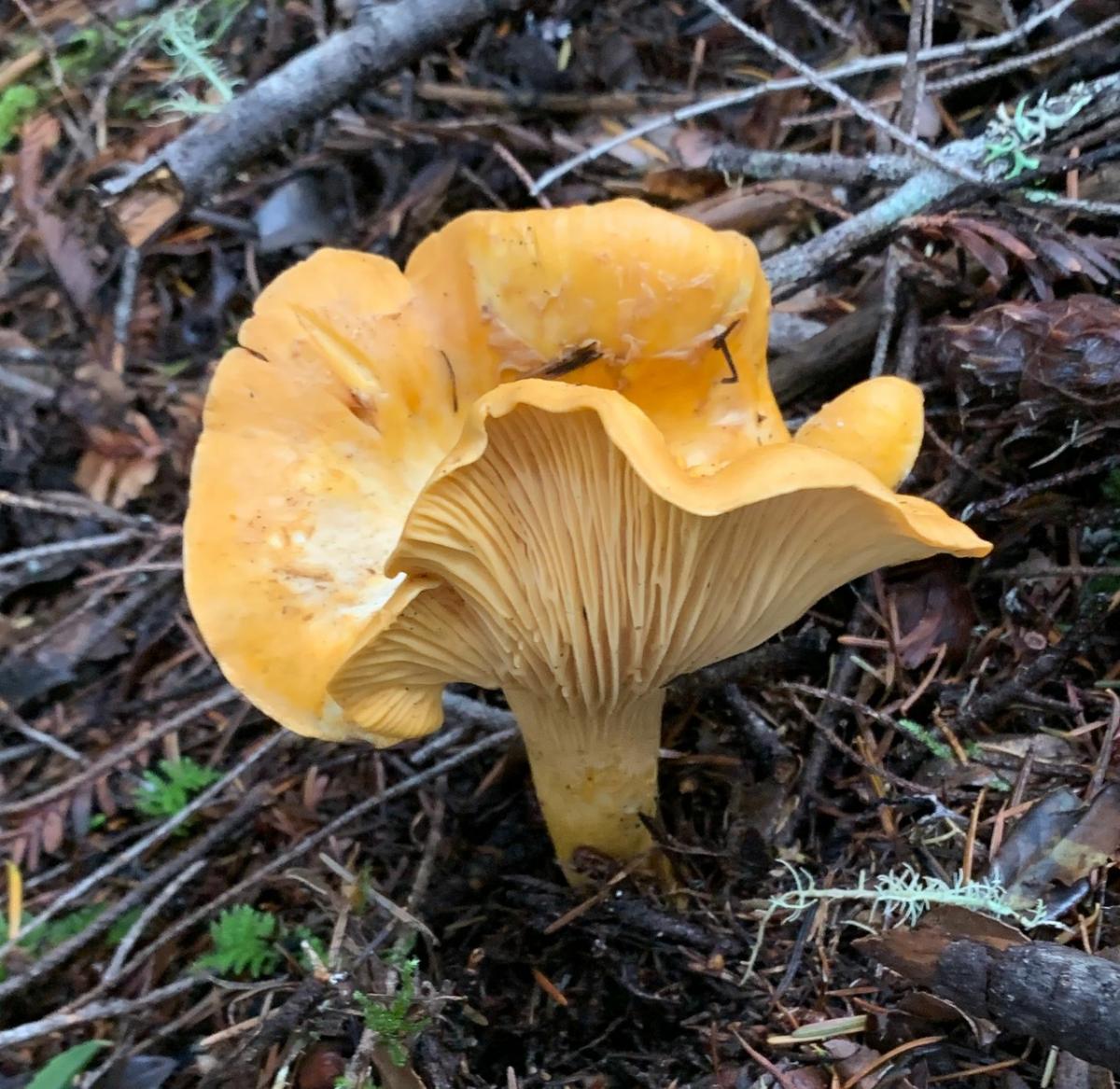
Cantharellus lateritius (Smooth Chanterelle)
- Region: Eastern North America
- Season: Summer
- Habitat: Oaks primarily, sometimes hickories
- Size: Cap .75-3.5 inches in diameter, Stem .5-1.8 inches tall
- Color: Golden yellow-orange
- False Gills: Almost nonexistent, smooth surface or slightly wrinkled
- Spore Print: Light yellow-orange, pinkish yellow
- Notes: False gills are not defined, giving a more smooth appearance than a typical chanterelle. They look more like wrinkles than false gills. Cap bruises orangish-brown at the edges.
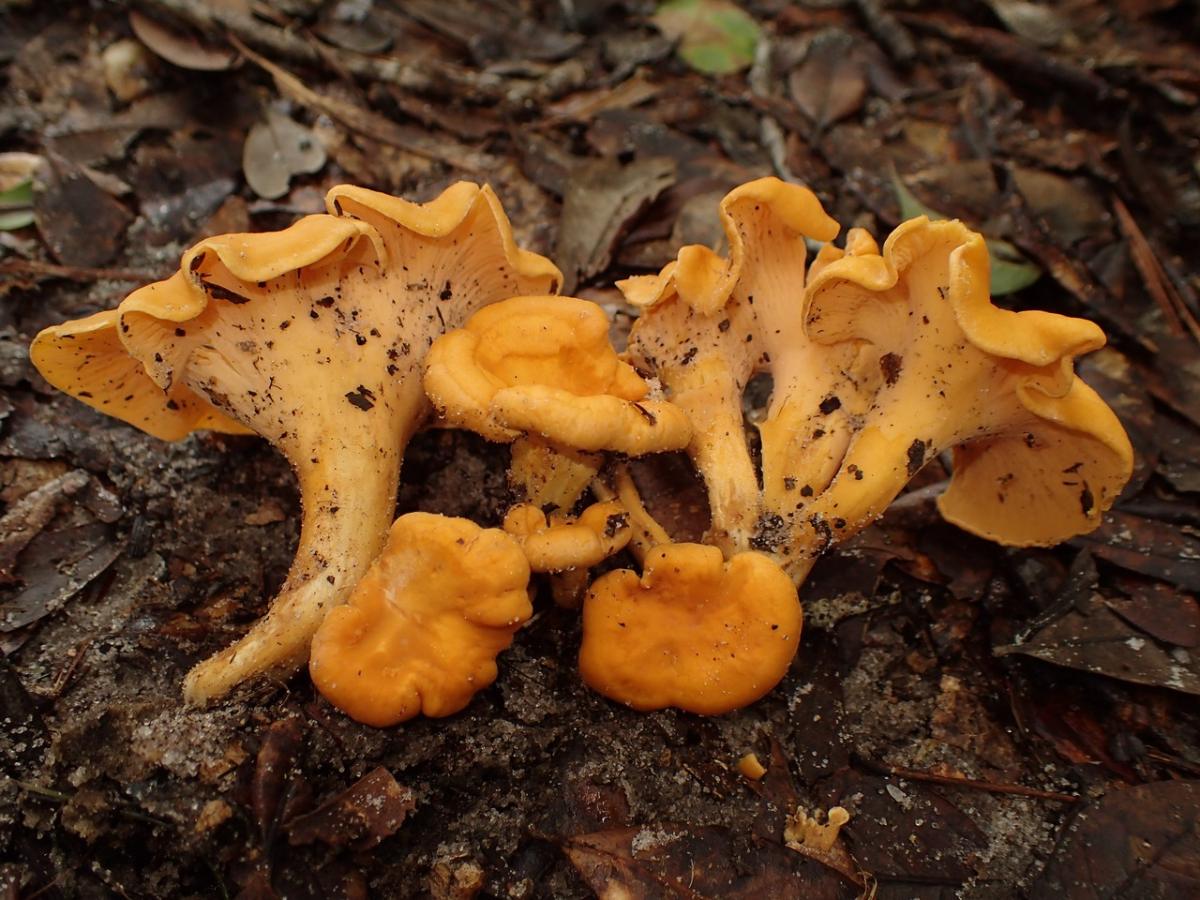
Cantharellus minor
- Region: East of the Rocky Mountains
- Season: Late spring through fall
- Habitat: Oaks and other hardwoods
- Size: Cap .2-1.2 inches wide, Stem less than 1.6 inches long
- Color: Orange-yellow
- False Gills: Same orange-yellow as the cap or a little paler
- Spore Print: Pale yellow
- Notes: The smallest of the golden chanterelles. It looks very similar to yellowfoot but without the hollow tubular center. Small cap and long slender stem, well-defined gills.
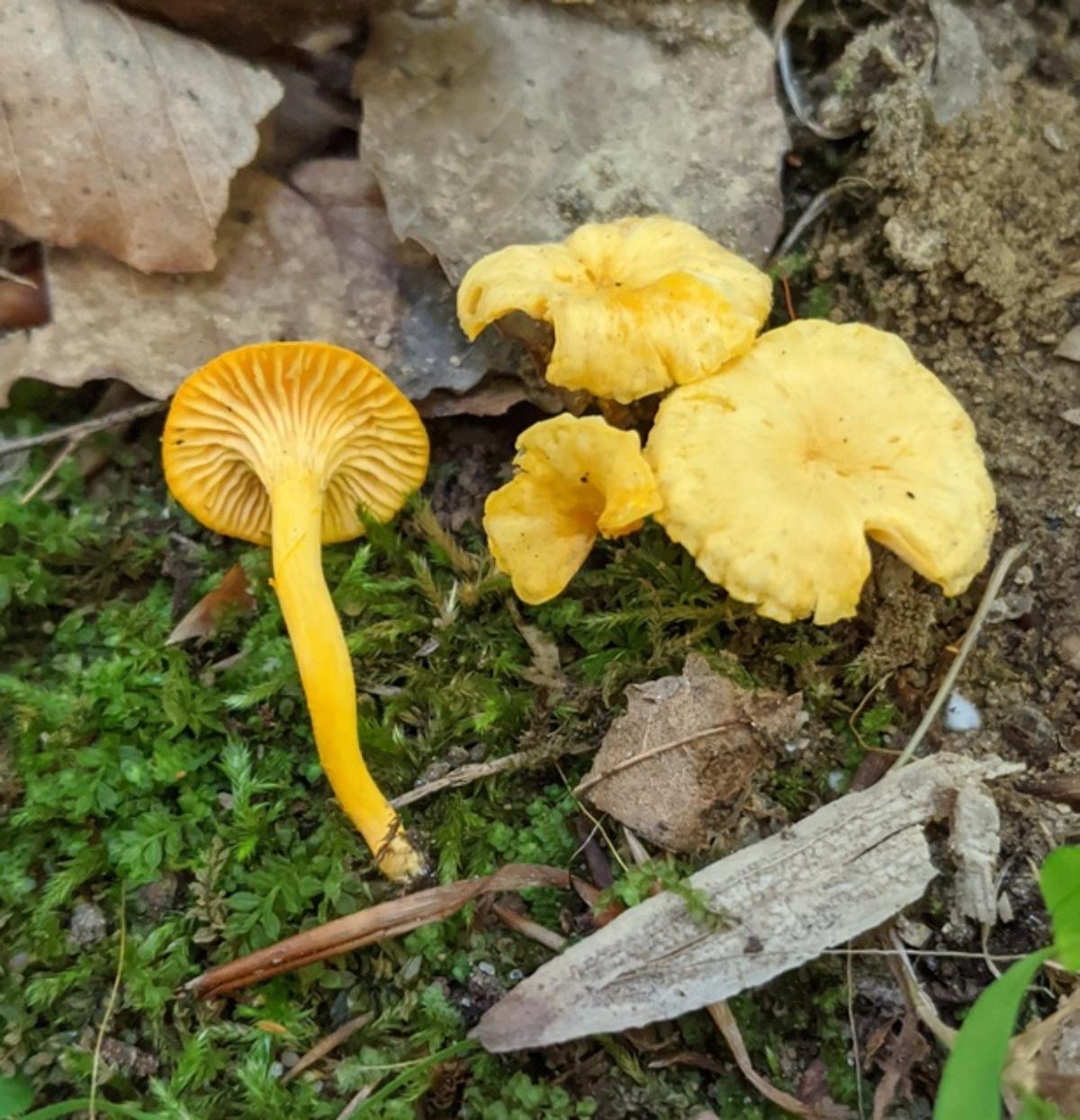
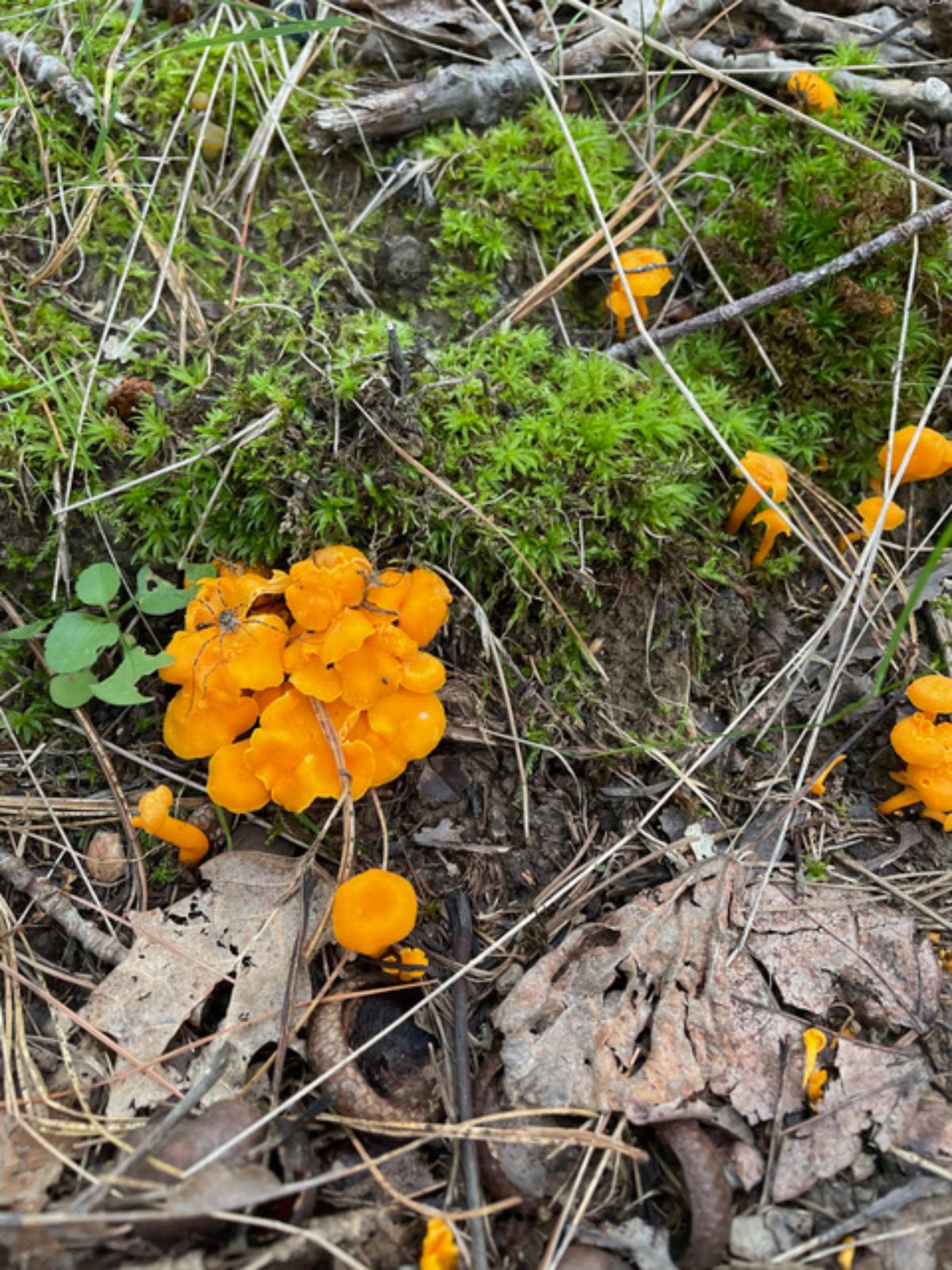
Cantharellus roseocanus
- Region: Pacific Northwest, Rocky Mountains, and westward
- Season: Summer through fall
- Habitat: Spruces and pines, specifically Sitka spruce, Bishop pine, lodgepole pine, and jack pine
- Size: Cap 1-4 inches across, Stem .75-2 inches long
- Color: Pale yellow or orange, fades to whitish with sunlight
- False Gills: Very bright orange, especially in comparison to the cap
- Spore Print: Pale yellow-orange
- Notes: A stocky chanterelle with remarkable coloring. Cap often takes on a pinkish hue or “bloom.” Named as a distinct species in 2012.
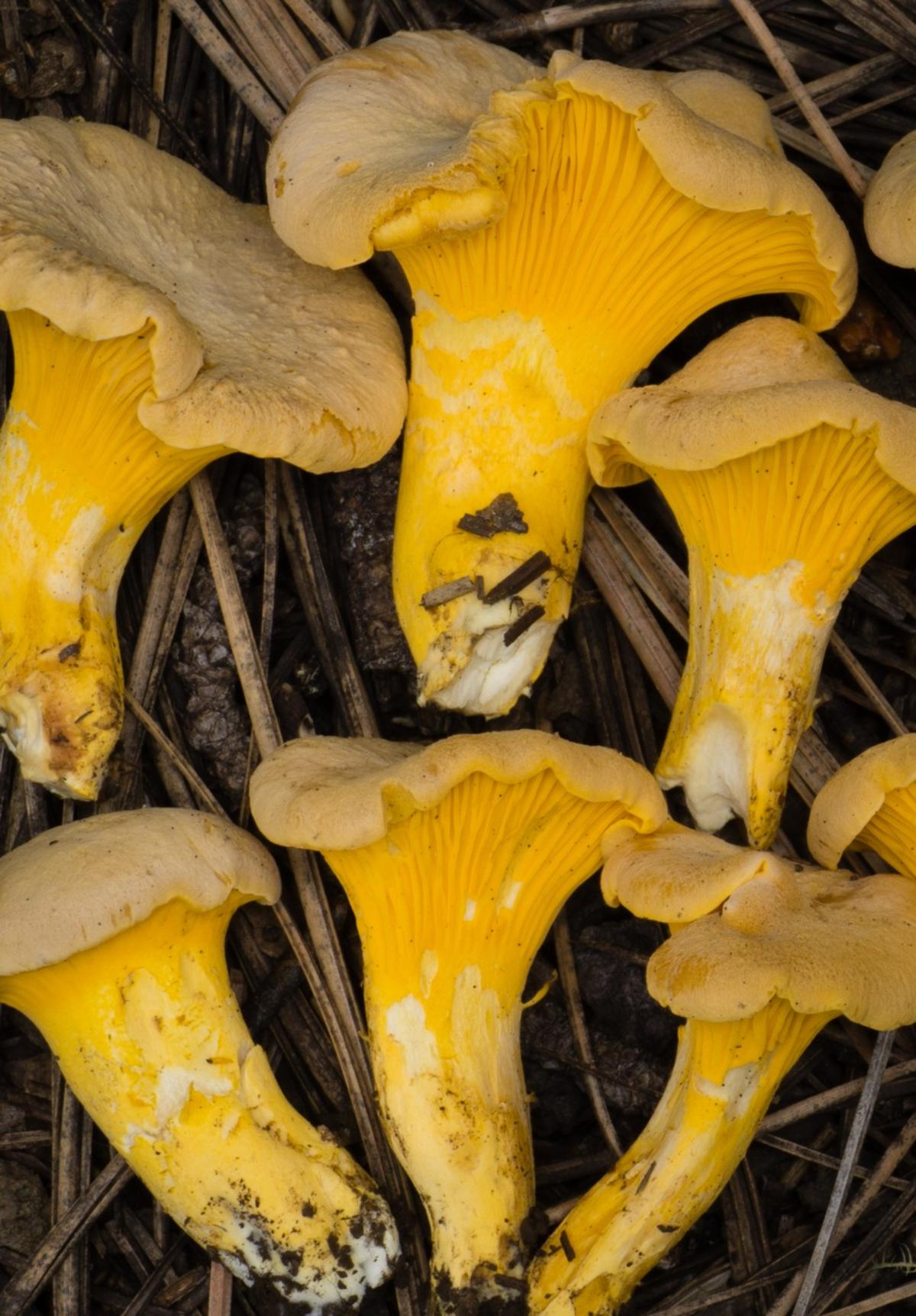
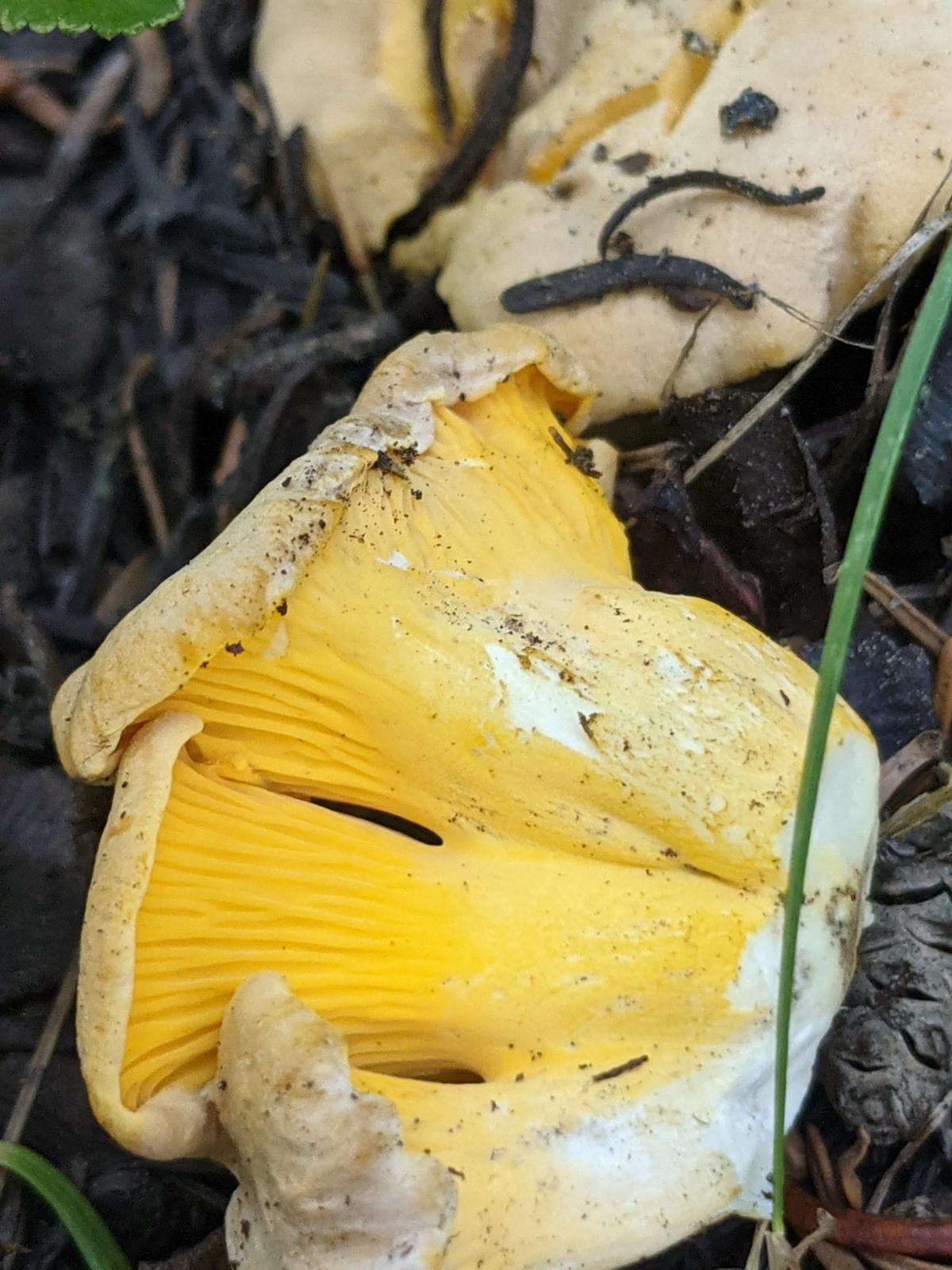
White Chanterelle
Cantharellus subalbidus (the White Chanterelle)
- Region: Pacific Northwest, California
- Season: Fall and winter
- Habitat: Conifers, especially Douglas fir
- Size: Cap 2-6 inches wide, Stem .75-2.75 inches long
- Color: White/Cream, but ages to yellowish
- False Gills: White
- Spore Print: White
- Notes: It looks just like a golden chanterelle except ghostly white. Bruises yellow-orange.
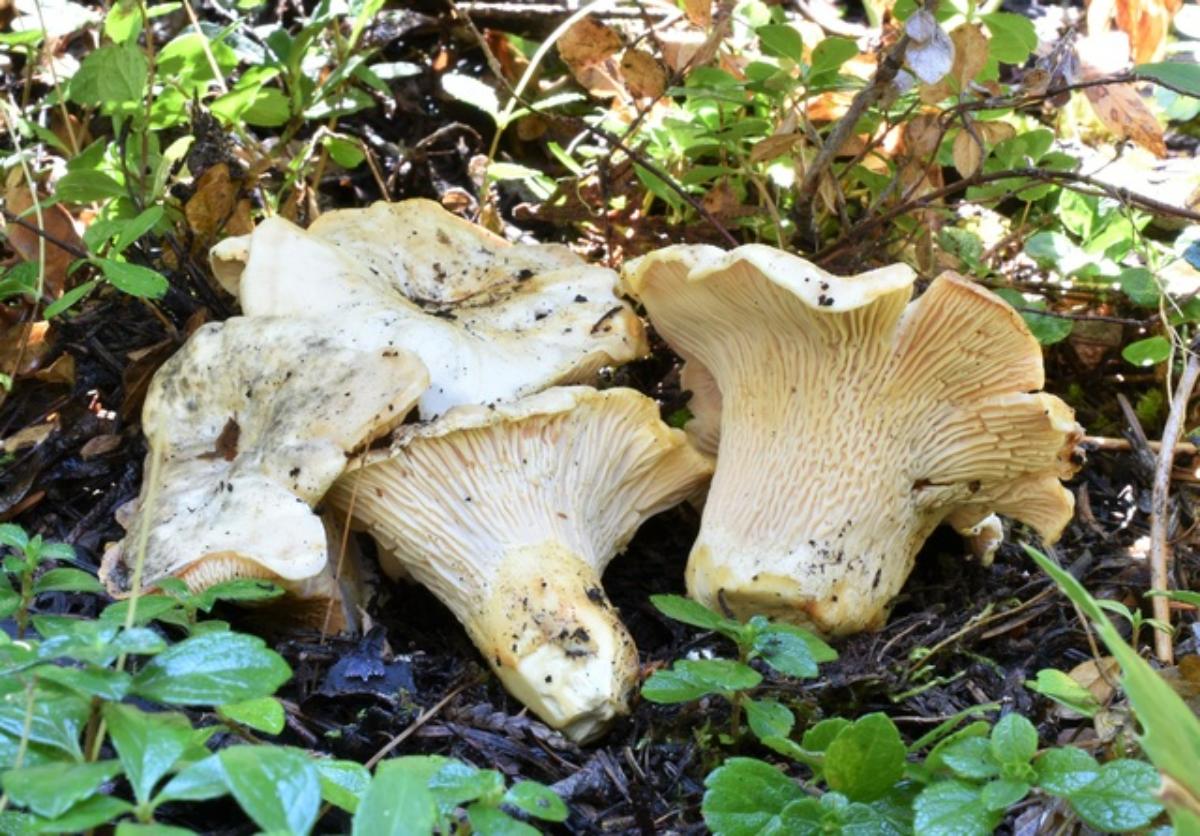
Red Chanterelles
Cantharellus cinnabarinus
- Region: Eastern North America
- Season: Summer through fall
- Habitat: Beech, oaks, sometimes shagbark hickory, and big-toothed aspen
- Size: Cap .25-1.50 inches across, Stem .25-1.5 inches long
- Color: Flamingo pink, bright orange, red
- False Gills: Same color as the cap or a little bit lighter
- Spore Print: White or faintly pink
- Notes: Very small chanterelle with unmistakable coloring

Cantharellus coccolobae
- Region: Caribbean, Bahamas, and Florida
- Season: Late summer into early fall
- Habitat: Grows in association with sea grapes
- Size: Cap .5-1.0 inch across, Stem .25-.75 inches long
- Color: Pinkish orange, deep pink, salmon red
- False Gills: Same color as the cap or a little lighter
- Spore Print:
- Notes: A very small bright pink-red chanterelle found in sandy areas along the coast.
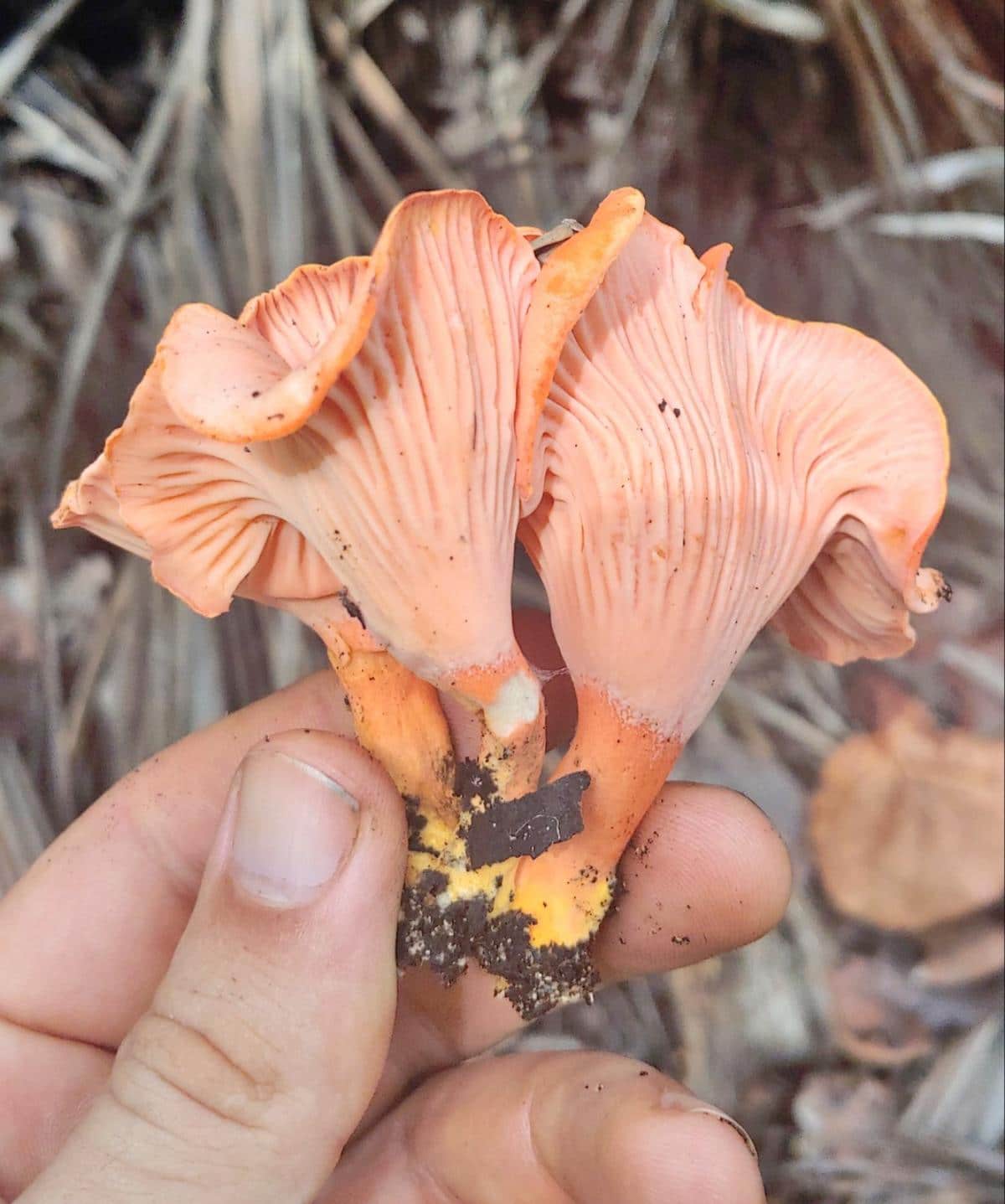
Cantharellus persicinus
- Region: Appalachian Mountains
- Season: Summer through fall
- Habitat: Oaks or eastern hemlocks
- Size: Cap .75-2 inches wide, Stem .75-2 inches long
- Color: Salmon-orange or pinkish-orange or peachy
- False Gills: Same color as the cap or a bit lighter
- Spore Print: Pinkish or cream
- Notes: Cap edges and stem bruise yellowish. Uncommon and seems limited to Appalachian Mtns.
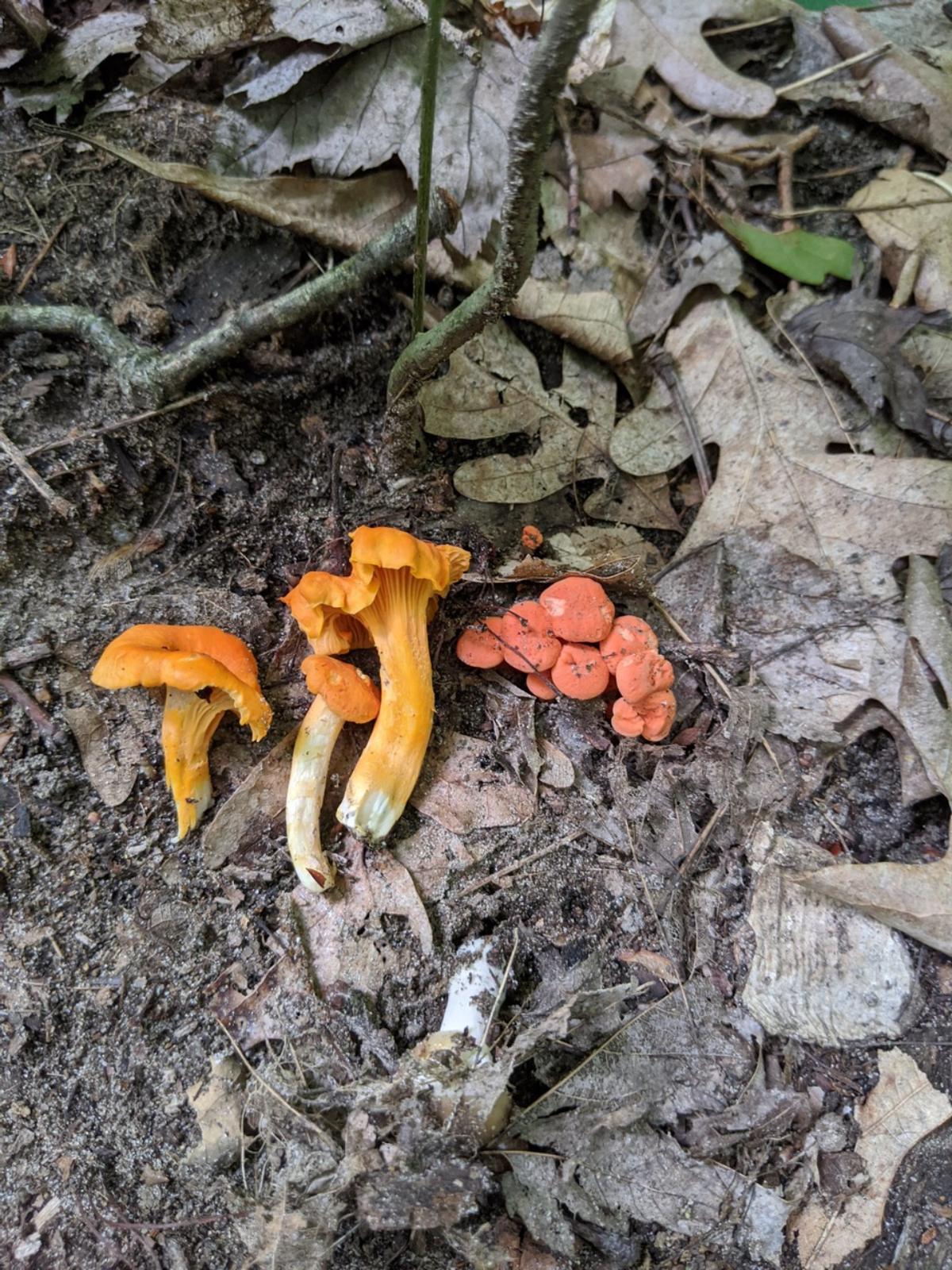
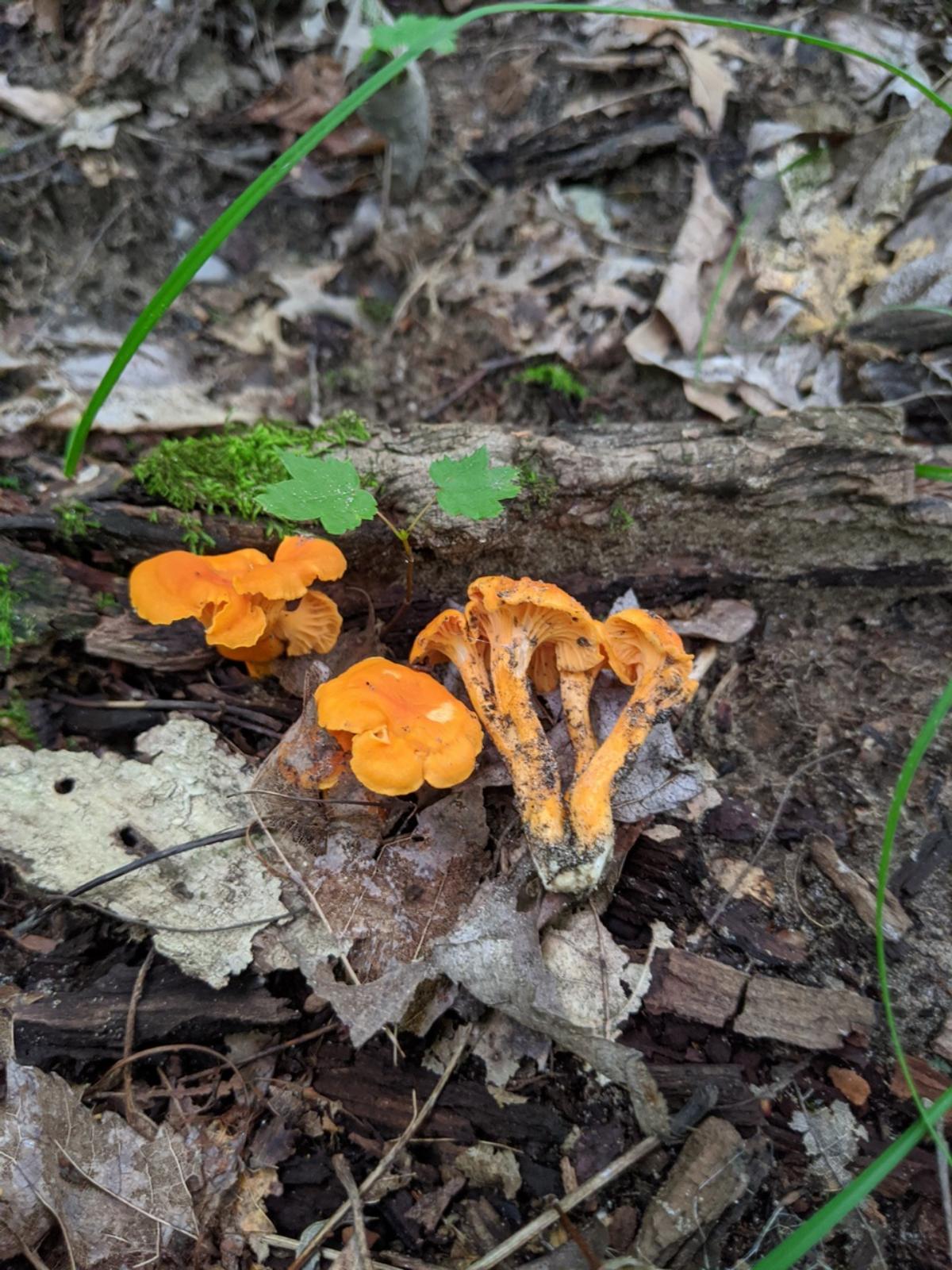
Cantharellus texensis
Exactly like Cantharellus cinnabarinus except found in Texas and the Gulf States. Exact distribution is unknown. Grows with pine and oak in sandy soil.
Chanterelle Mushroom Common Questions
Wait, what about the blue chanterelle?
Blue chanterelles aren’t actually a chanterelle species, though they are distantly related. They look similar, which is how they get their common name. The blue chanterelle is edible but is rather uncommon and rare of a find.
Are all chanterelles edible?
Yes, all chanterelles are edible. And they’re one of the best-tasting wild edible mushrooms out there. You have to be very careful about identification, though, as there are some lookalikes that people often get confused about. And one of the lookalikes is quite toxic. To learn more about proper identification and lookalikes, study the Chanterelle Foraging Guide.
What do chanterelles smell like?
Most chanterelles have a very distinctive fruity smell. Most people liken it to apricots, sweet almonds, or a fruity sweet scent.
Can I grow chanterelles?
We wish! Due to their mycorrhizal association with specific tree species, chanterelles have so far eluded determined growers. This isn’t to say it isn’t possible, just that it hasn’t been figured out yet.
When do chanterelles grow?
Chanterelles adore a hot sauna. Start looking after long drenching rains followed by hot, humid days. This weather isn’t much fun for the forager, but for chanterelles, well, it’s worth it! It generally takes a few days after the rains for chanterelles to fruit.
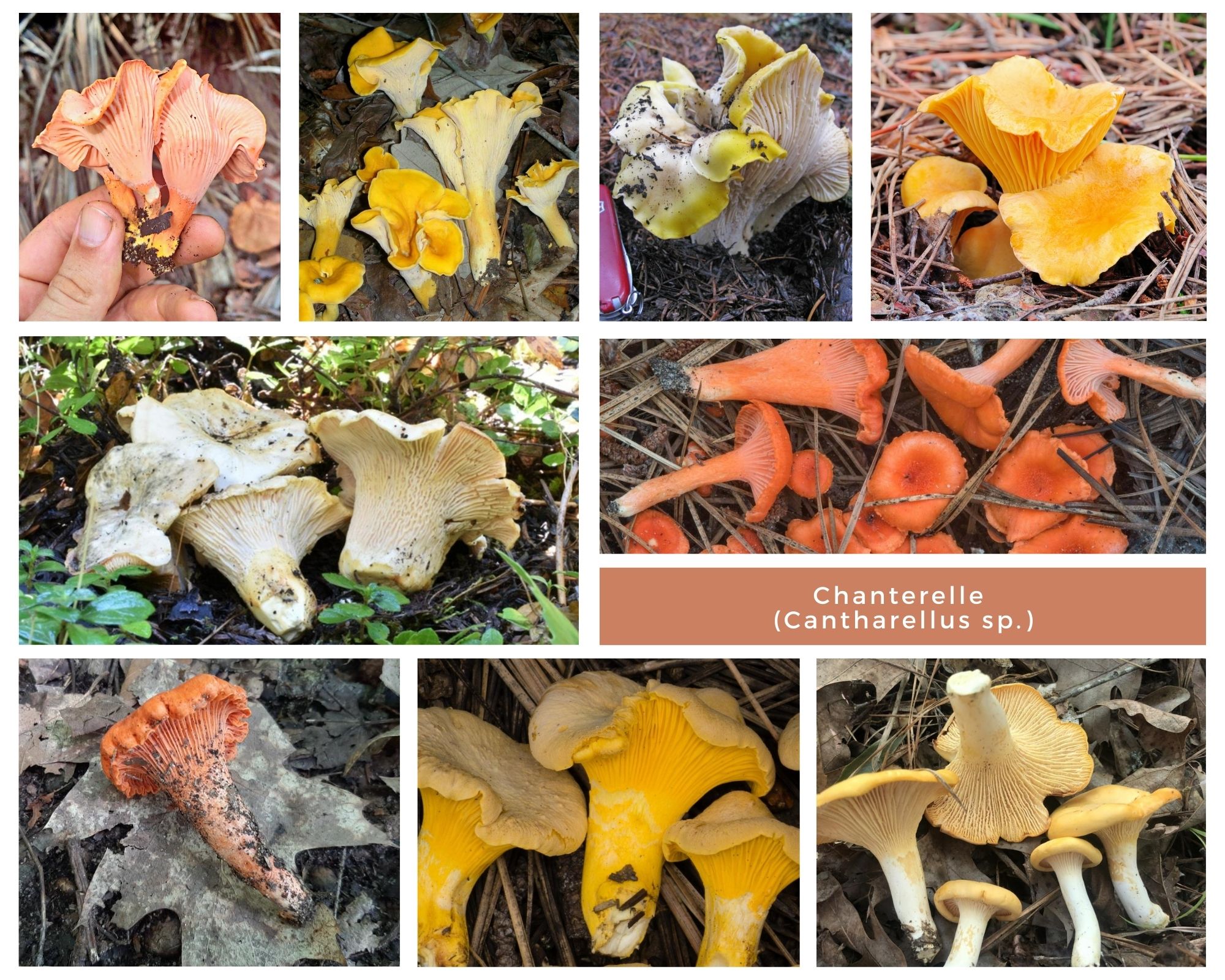






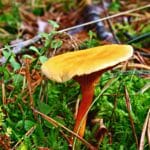
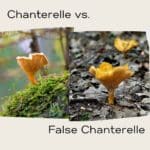
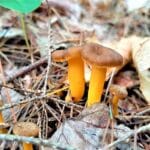
David Spahr says
Here in central Maine I have had some chanterelles sequenced. Cantharellus phasmatis group and Cantharellus enelensis.
Jenny says
Amazing! I have your mushroom book :-), excellent guide (I recommend it too, as the primary guide for New England — https://www.mushroom-appreciation.com/mushroom-identification-books-by-region.html ) Thank you for all your dedication; your book was one of my entries into the world of mushroom foraging!
David Spahr says
Thank you!
Nan Cayler says
This is the first website I have found that identifies all the varieties of chanterelles. I learned that we are harvesting Cascade chanterelles here in Plumas County. Thank you for being so thorough! Most just focus on the goldens.
Jenny says
Thanks! That means a lot; it takes some effort to be thorough (or at least as thorough as possible). Happy foraging!!
Evette Eich says
Much gratitude sent your way!